September 2015
16 September 2015
Sweden Road Trip: Part Three
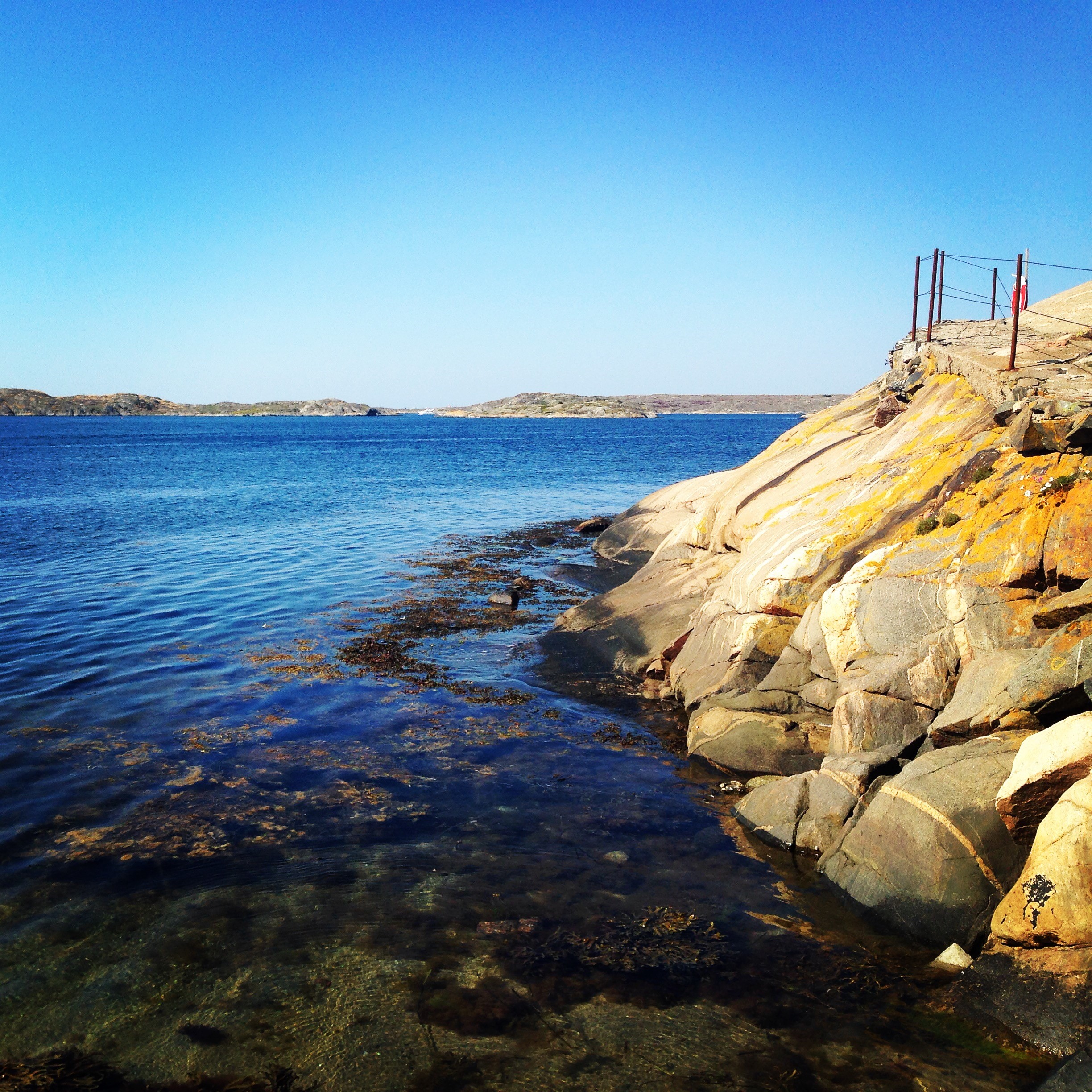
Hello All! It is taking me longer than I thought to get all of our road trip documented for you. This is okay since it has been rainy work days mostly since we have returned. Alejandro is working through data on his computer and he and I have been getting Ethan ready for Kindergarten, which in Germany goes from ages 3-6; Ethan will start in October.
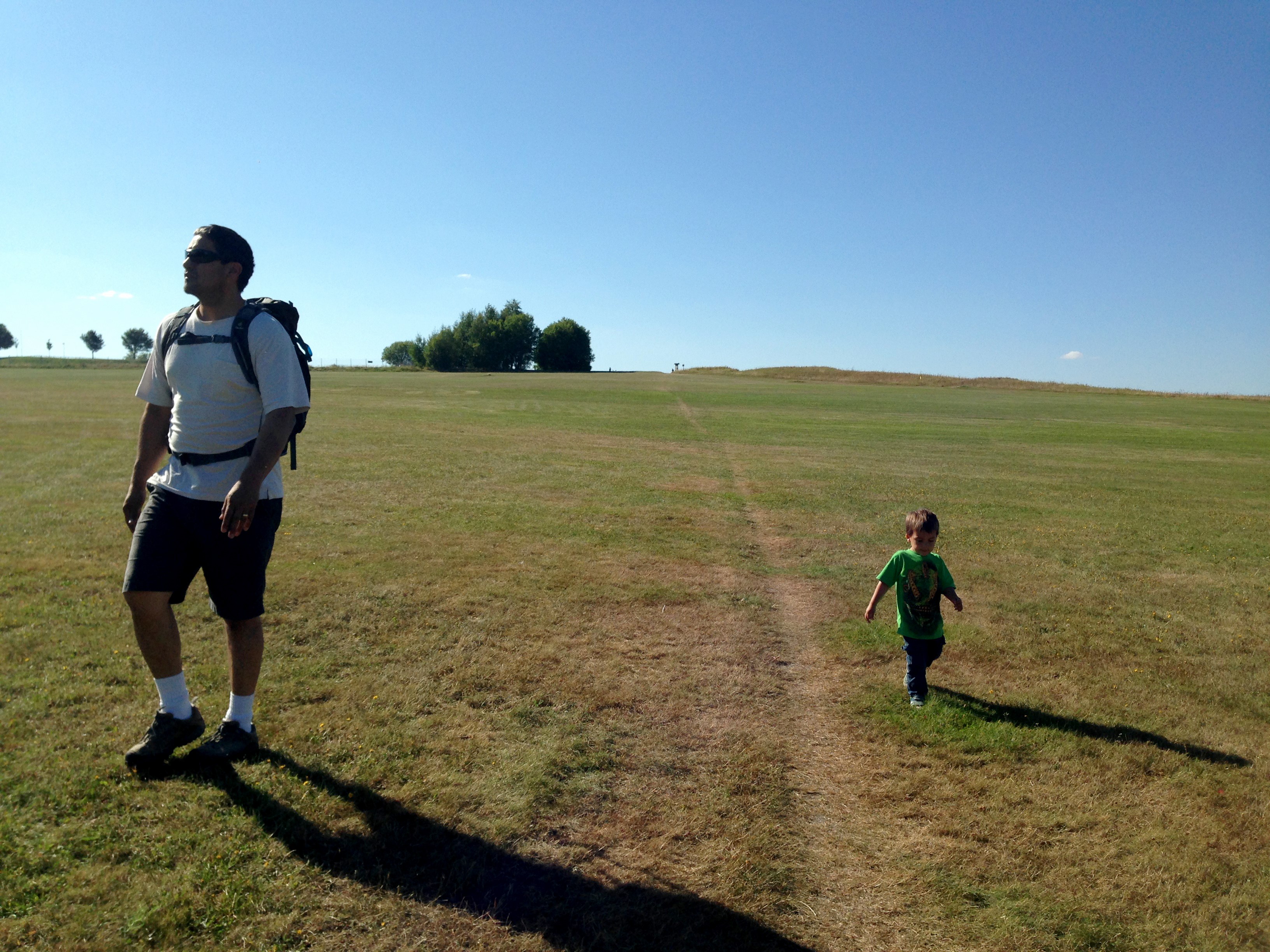
The next part of our trip takes us from the east coast and the Baltic Sea to the west coast and the North Sea. We crossed Sweden, stopping for the night in Jönköping on Lake Vättern.
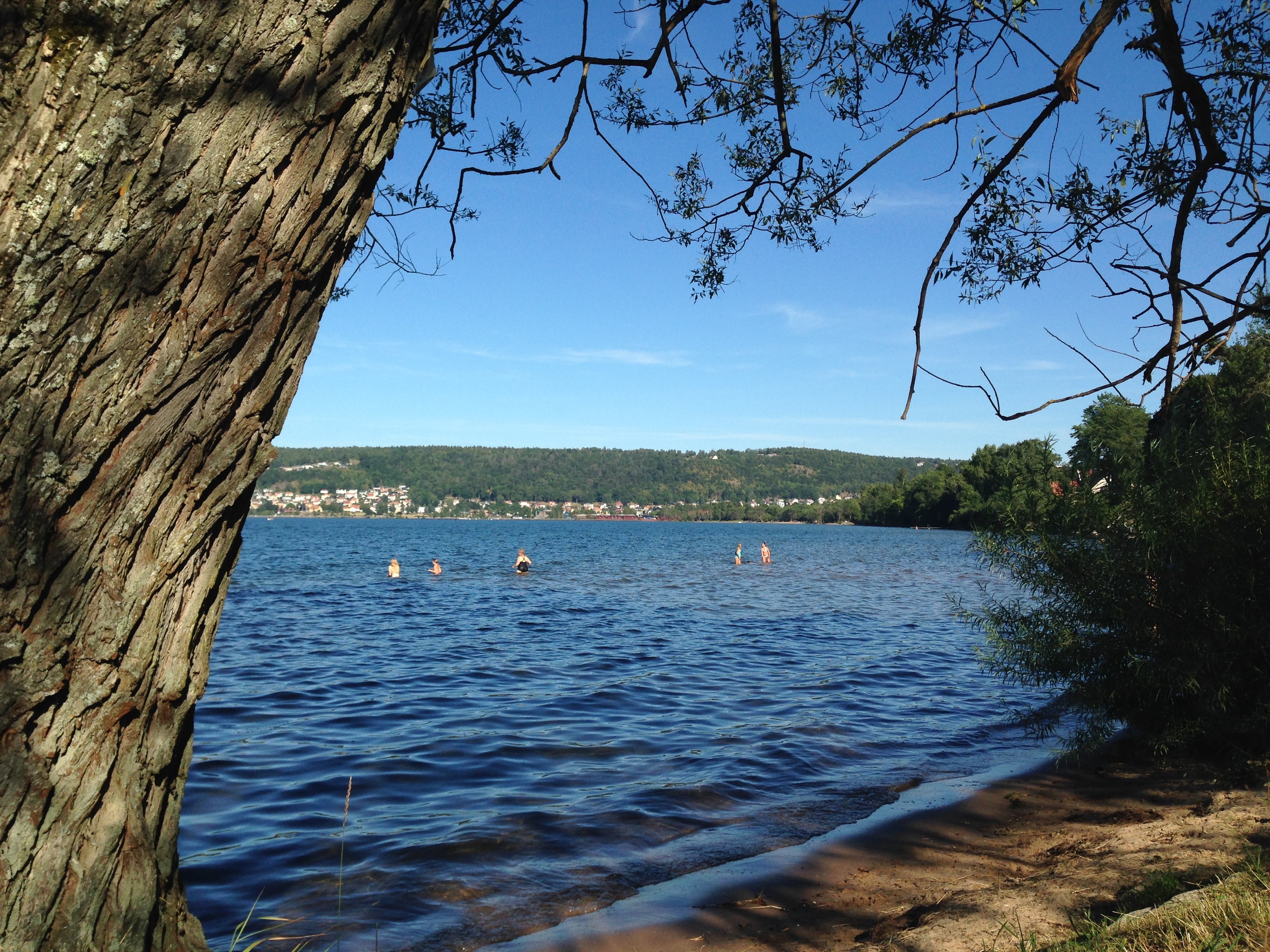
We were able to explore the town a little and took a walk to the lake for a swim and some great views. Jönköping has a museum dedicated to the artist John Bauer whose fairy tale drawings were inspired by the deep forests of the area. His illustrations are beautiful and , including many trolls and golden haired princesses. We bought a book of Swedish folk tales and have been reading them to Ethan as bedtime stories. So far he just thinks the trolls are funny.

From: bauer.artpassions.net
From Jönköping we left early to get to Gothenburg (Göteborg in Sweden). In Gothenburg there is a large science museum for kids called the Universium. You take a long diagonal elevator to the top where you are plunked into the mountains of northern Sweden. From here you follow a river down the slopes, learning about the ecosystems and animals that live in the mountains. The steams have local fish and birds. The second floor of the museum is an aquarium with large cod and a shark tank which includes a sawfish! Ethan was very excited!
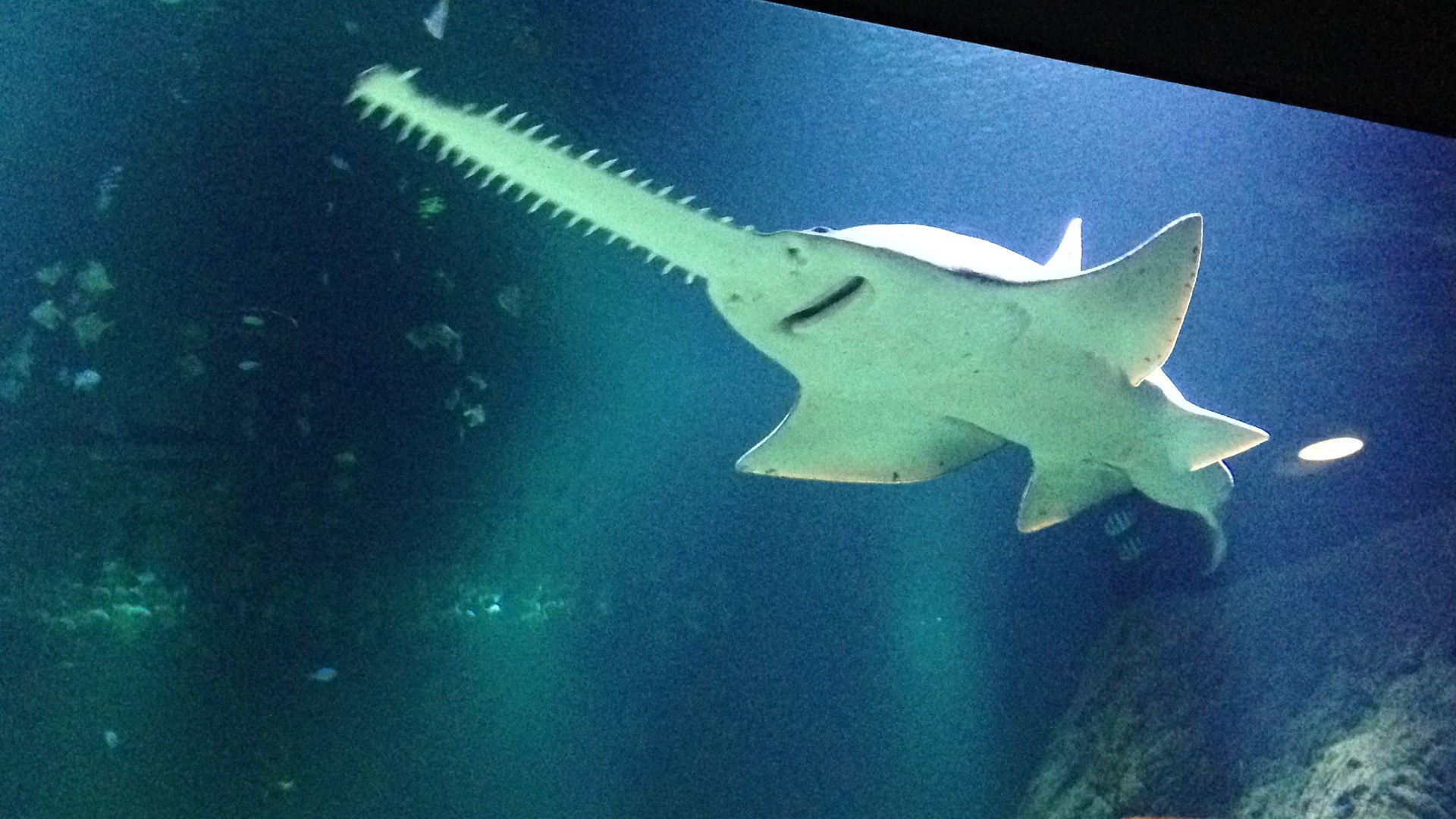
Heading out of the aquarium there is an exhibit of prehistoric animals that once roamed the area during the ice age, including moving replicas of saber toothed tigers and large mamooths! From here, there are three floors dedicated to science and technology. There is a robotics corner where kids can build their own robots, two 3D printers, a room of huge foam blocks where kids can build forts, a replica space shuttle, an exhibit on the mechanics of sports and a Velcro wall where we stuck Ethan! We could return many times and not experience it all.
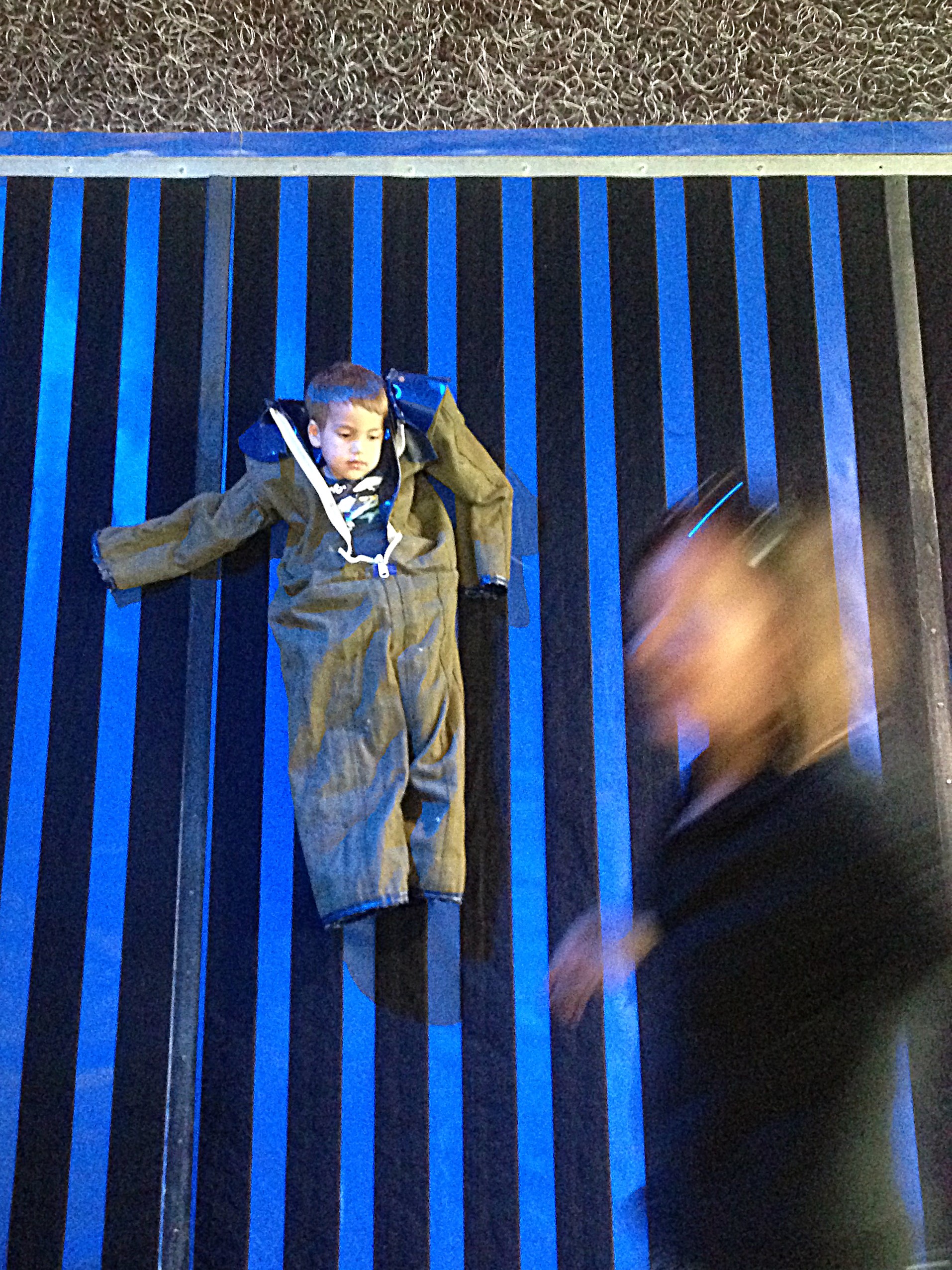
The museum was all interactive and there were activities for all ages of kids. The middle of the museum is a three story rainforest. Here you wind down paths and platforms in the humid jungle air and see little monkeys jumping around you, big blue butterflies and large green iguanas! It is a wonderful museum that was tons of fun!
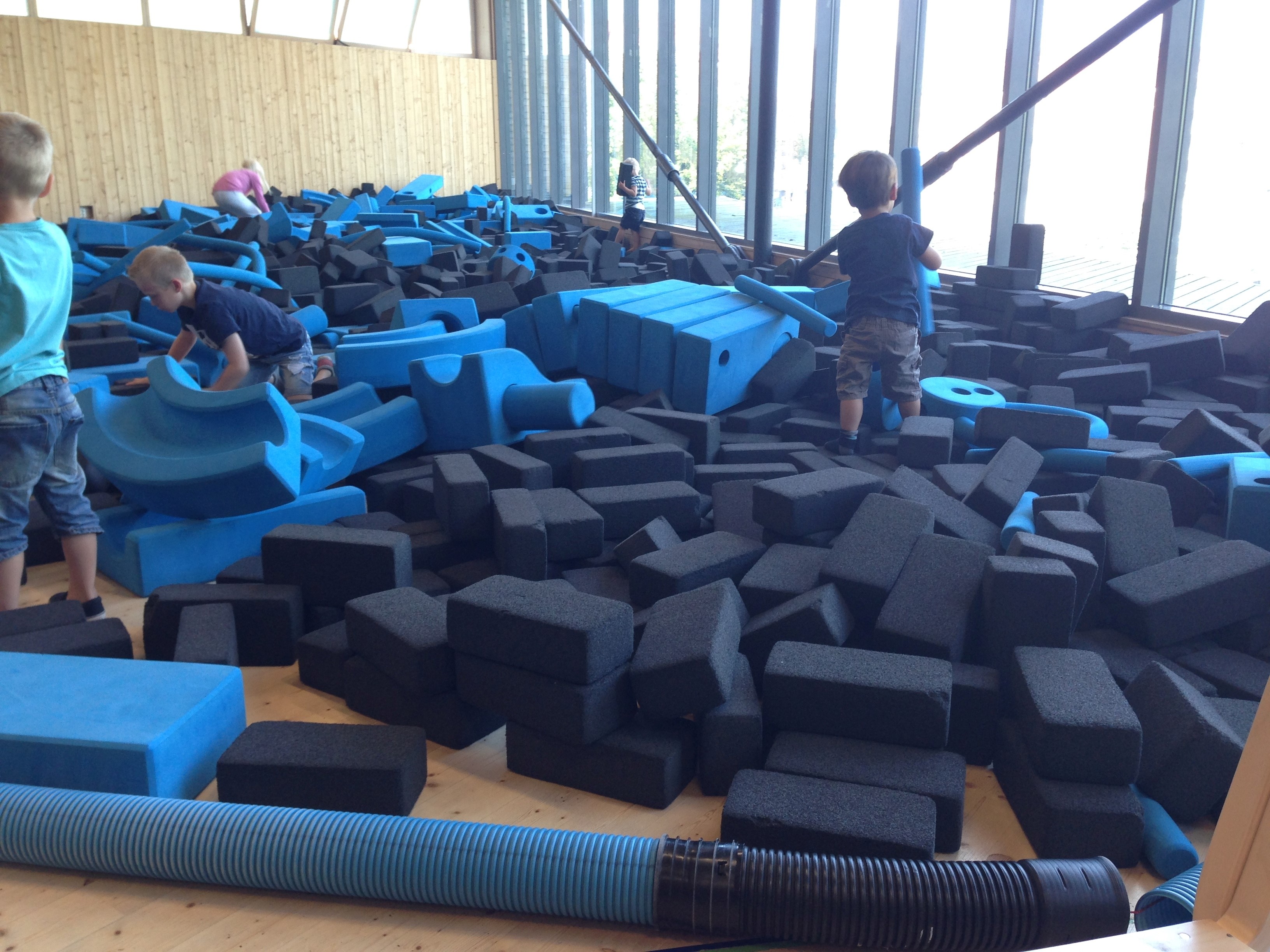
From Gothenburg we drove north to the picturesque Bohuslän Coast. This area is known for many small islands with tiny fishing villages. The villages consist of brightly colored wooden houses stuck onto the rocks. The swimming beaches are really just smooth flat rocks that dive deep into the water. We had a couple of beautiful days exploring the islands and climbing up many rocks and cliffs.
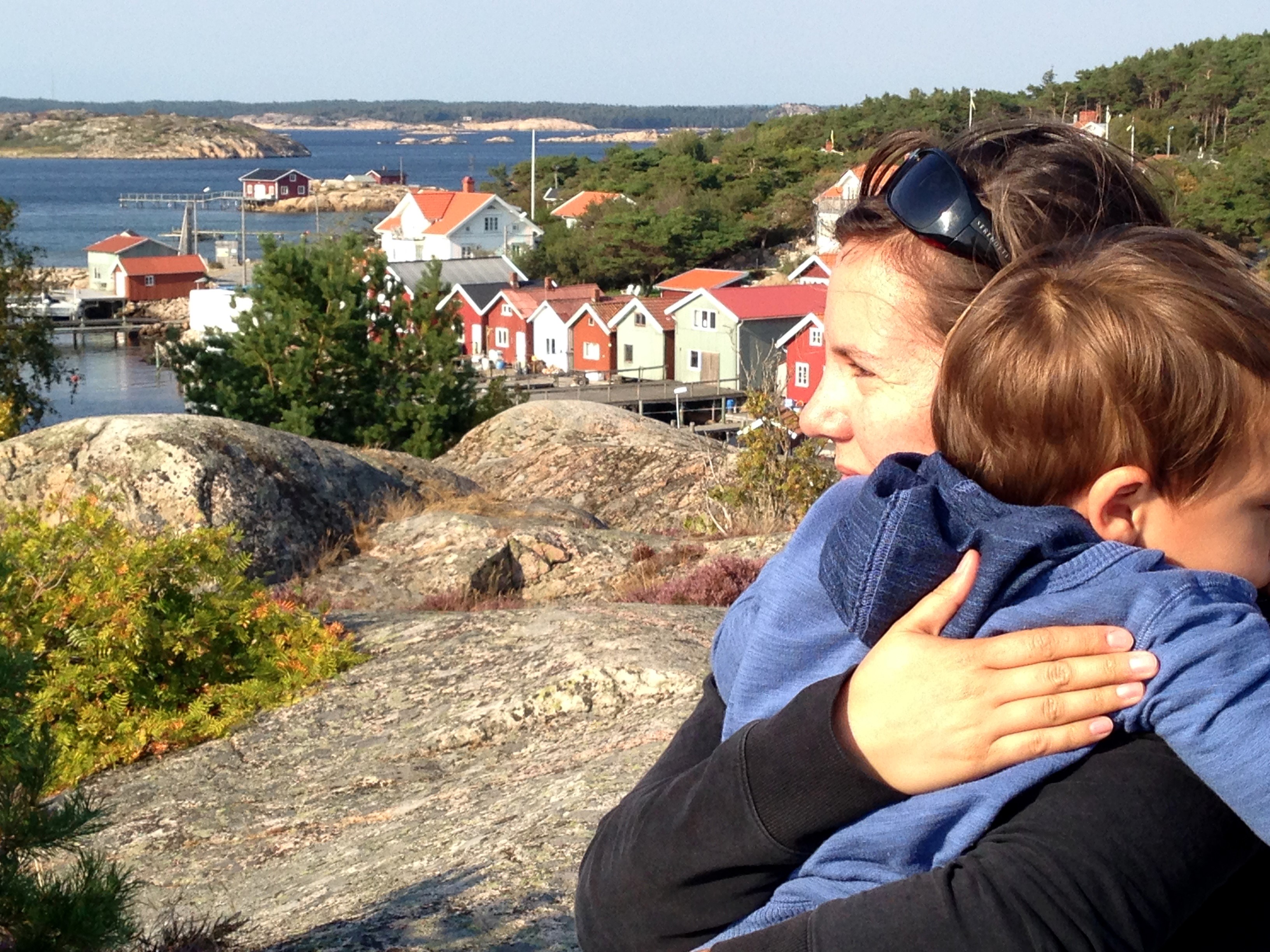
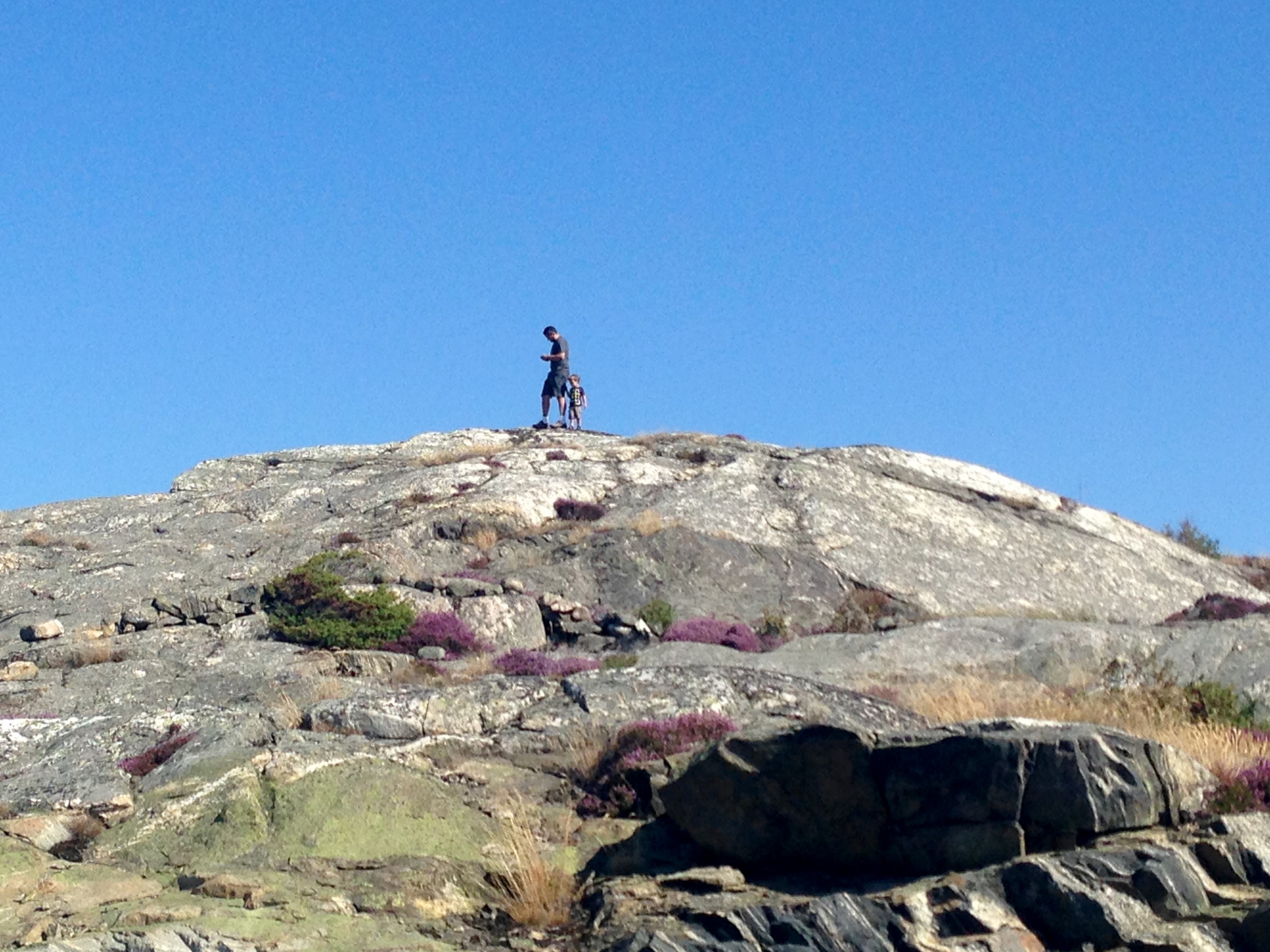
The best view by far was a hike up the cliffs behind Fjällbacka. The hike took us into cracks in the rocks with huge boulders looming overhead and up rickety wooden stairs stuck to the side of the cliff up to the windy top for a panoramic view of the coast and islands.

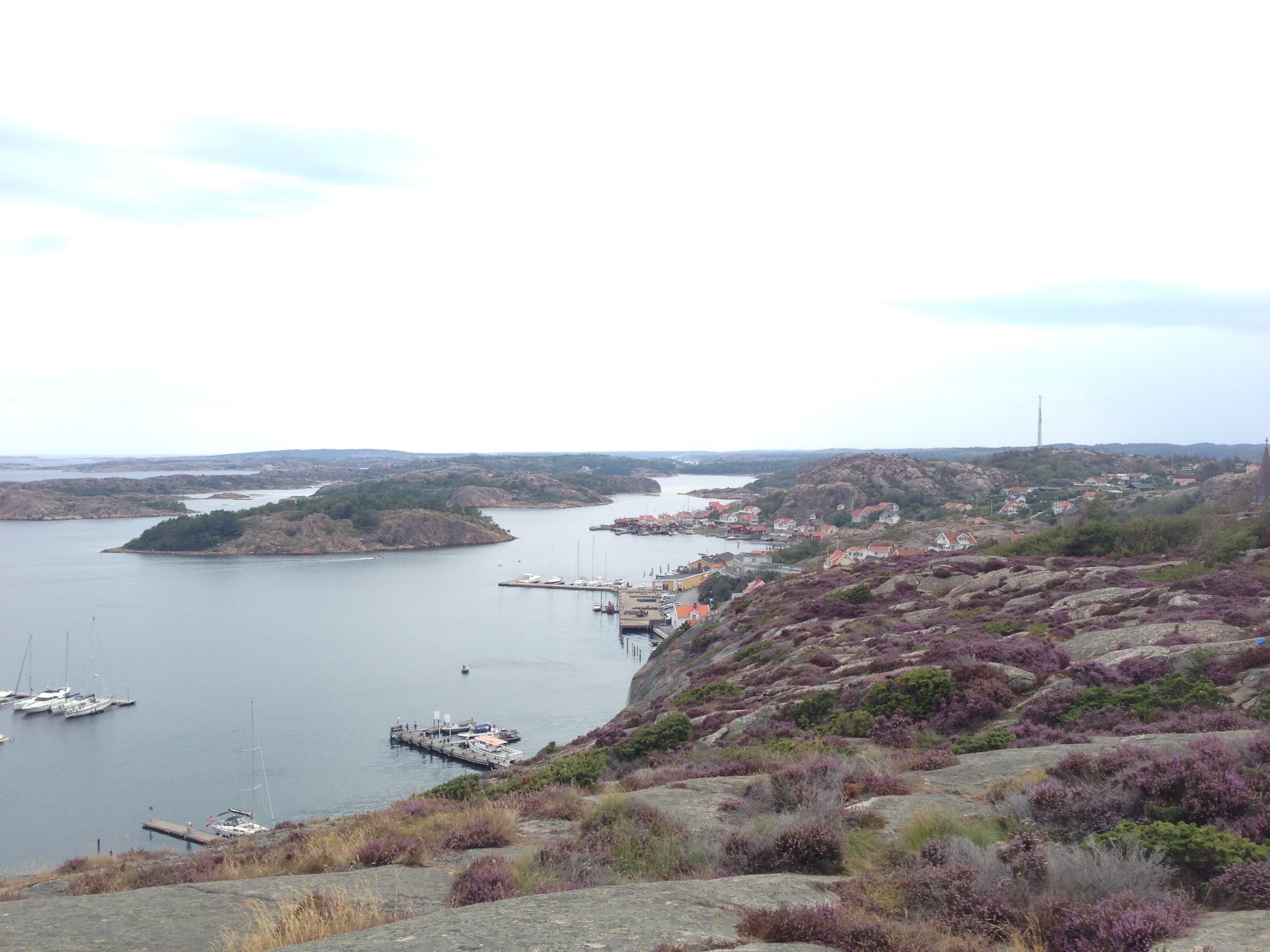
The heather was blooming which created a purple tinged show. We also explored the history of the Bronze Age (1000-500 BC) villages that used to be in this area. There are many carvings from this time around the islands that tell what life was like during these times. Archeologists painted the carvings red so that they are easier to see and study. During this time the climate was warmer and the sea levels higher. The carvings tell of fleets of ships trading and exploring, cattle being raised and farming with plows. It is amazing that the carvings have lasted this long and allow us to peek into a culture that existed so long ago.

Since we were so close to Norway one day we decided to head north for the day just to see it. Unfortunately it turned out to be a very wet day with a downpour for our whole trip. What I can tell you about the little of Norway we saw is that it is beautiful and green with many deep dark lakes. I would love to return one day in better weather and spend more time there.
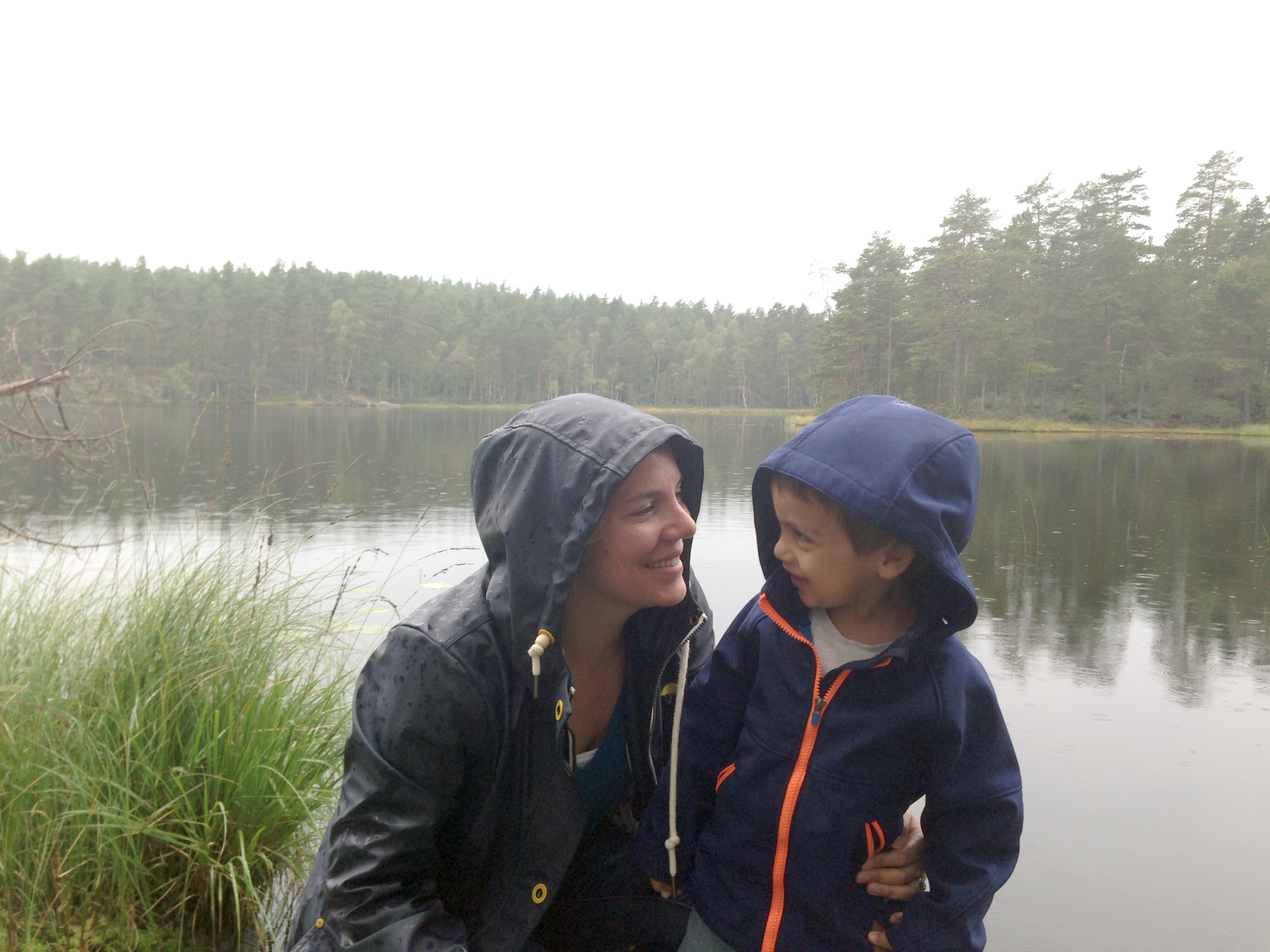
We wanted to take a new route home so we decided to take the ferry from Gothenburg to Frederikshavn, Denmark. Frederikshavn is close to the northern tip of Denmark, which we wanted to see. The three-hour ferry was nothing like the ferries we have in Washington. These are huge boats that carry passenger vehicles and large trucks carrying goods. Inside, the ferry has four floors for passengers including two cafes, a kid-playing area, a restaurant and a VIP lounge. We could have taken an even larger overnight ferry that goes straight from Gothenburg to Kiel with rooms for sleeping, but we wanted to see Denmark.
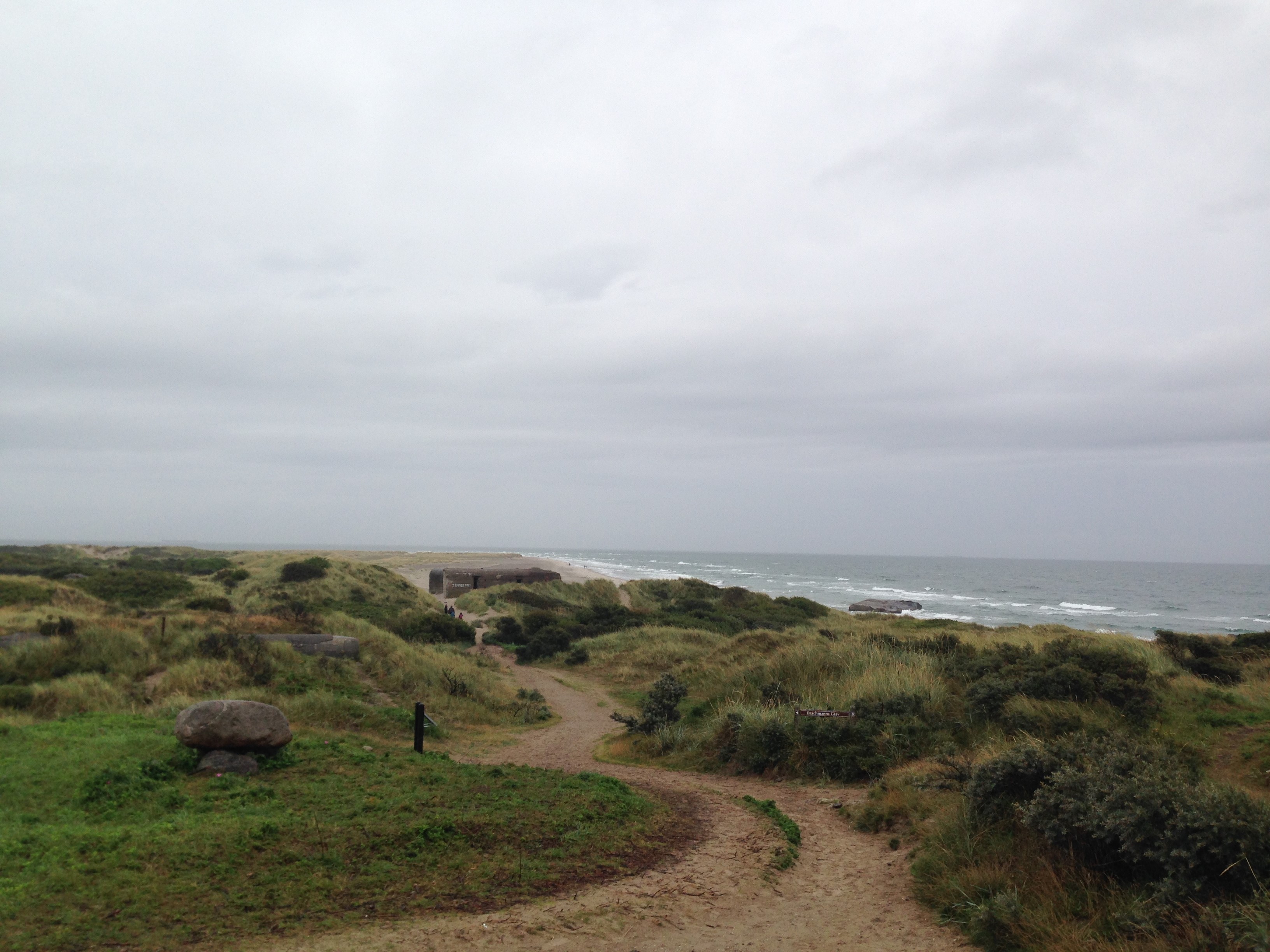
Skagen is the town at the tip of the Denmark peninsula. This is where two seas meet the Kattegat and the Skagerrak. All of Denmark is very flat and this place is no exception. A path leads you on the small dunes to the sandy beach. Here you can see old war bunkers and a large bronze compass. Although it was rainy and windy it was a beautiful place. It was also very popular. The parking lot was full at 10:30 am on a rainy Tuesday! It is the most visited tourist location in Denmark. On hot days people crowd the beaches but it is forbidden to swim because of the strong currents caused by the two seas meeting. This place is known for its history of fishing and artists who visited these shores for inspiration in painting and poetry.
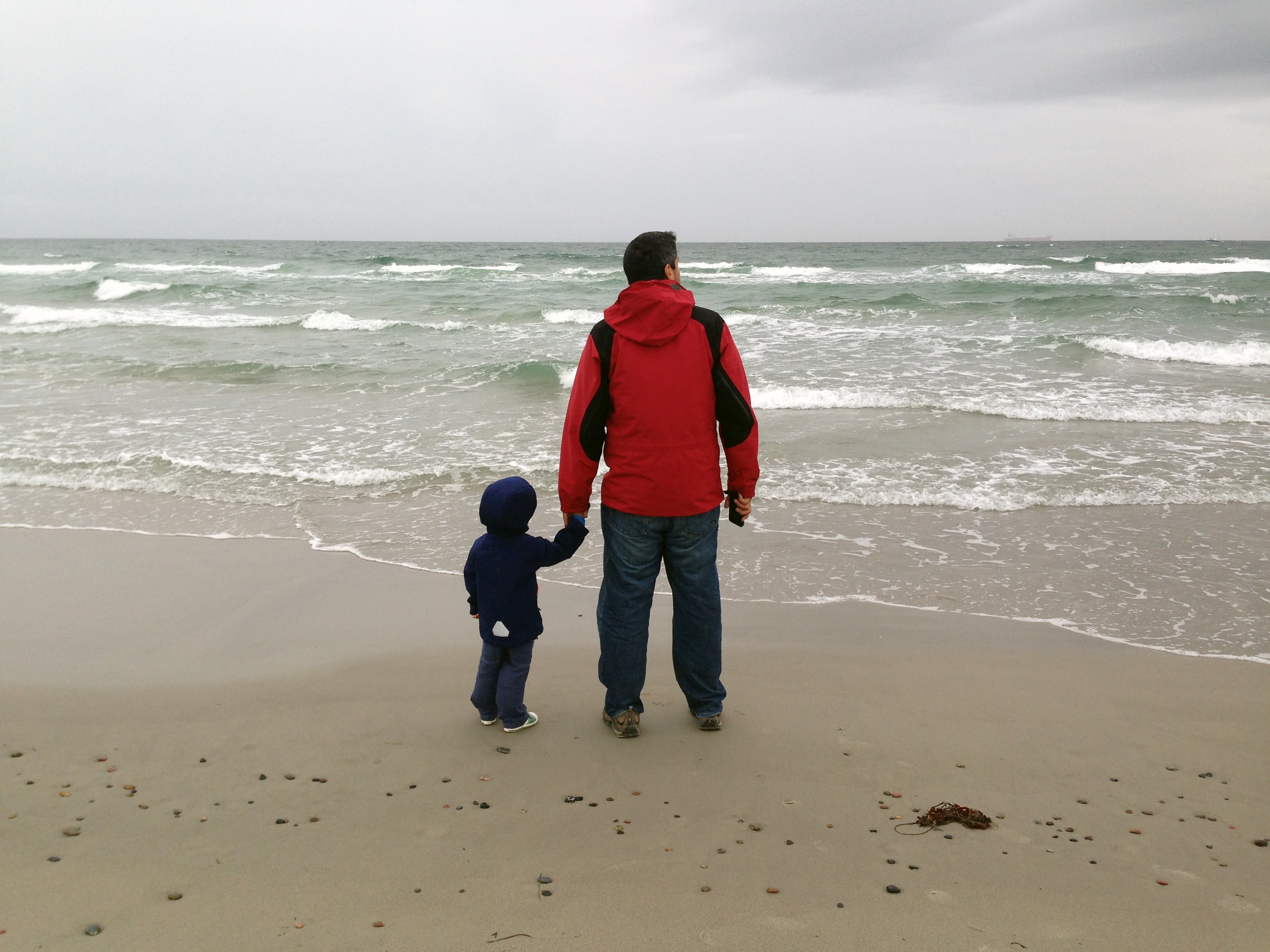
From here we took the long seven hour drive back to our Germany home in Kiel. Whew! What a trip! I am so lucky to have experienced and seen so much of these beautiful countries. It was a great opportunity to experience new cultures and explore new countryside. Traveling with a toddler kept us to outdoor adventures and away from large cities (kids find looking at buildings boring) and I am glad for it. It was nice to walk the lands and swim the beaches where locals go to cool off and relax.
In the last few weeks we have had to opportunity to travel to the large city of Hamburg a couple of times and I will tell you all about it next post. Hope you are all well and settling into the routines of the new school year. I have loved hearing from some of you and hope to hear from more of you!
9 September 2015
Sweden Road Trip: Part Two
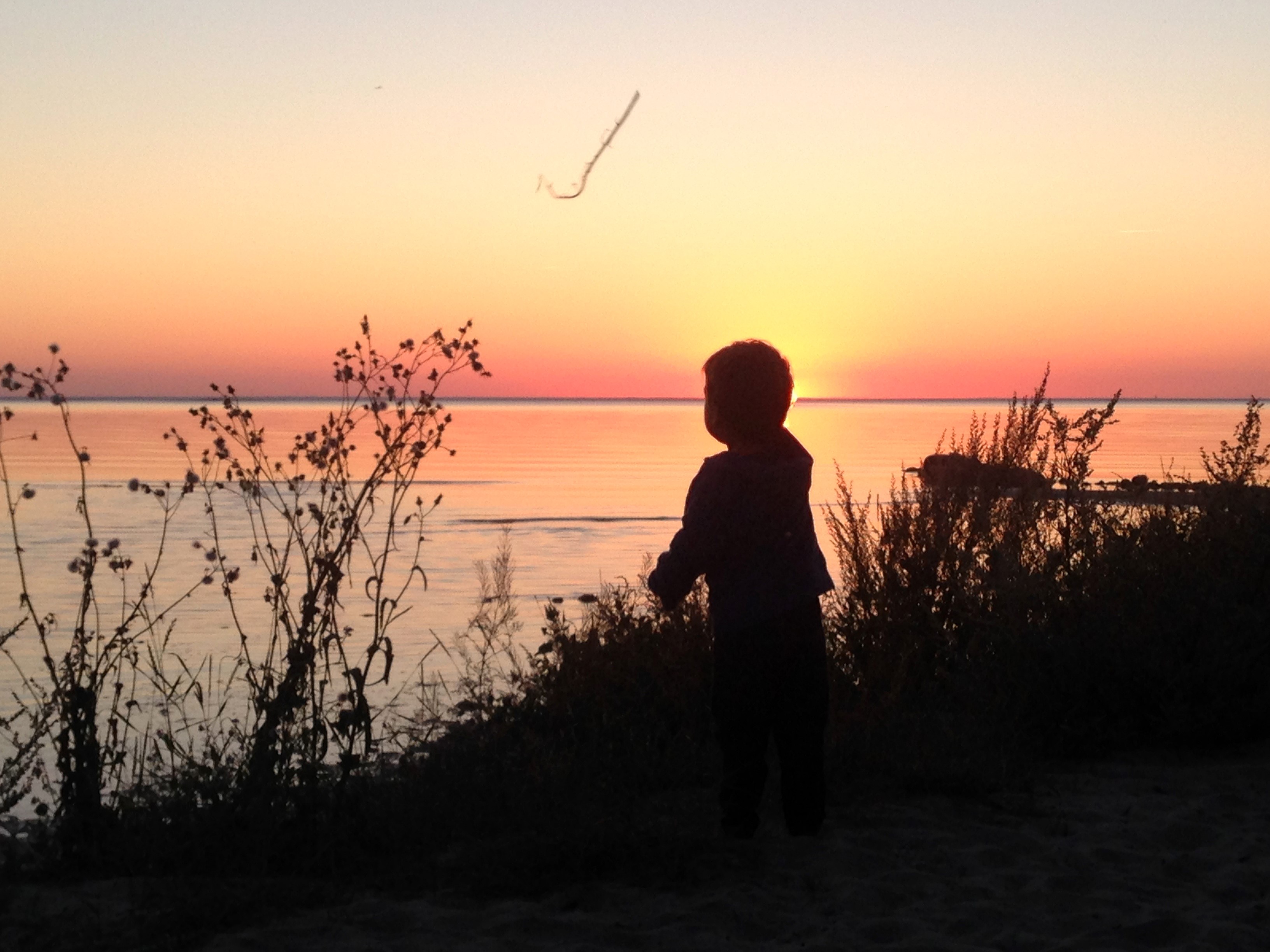
We spent a couple of days on Öland Island off the South East coast. This island is long and skinny and reachable via a bridge. The whole lower half of the island is a World Heritage Site due to the amount of history preserved that tells of a long past of using the island for farming, grazing and trading. Today the island is a favorite Swedish holiday spot, which includes the royal family who still have a summer home on the island and celebrate the princess’s birthday there every July. The island is well known for cycling and camping. There are many old oak forests and many, many windmills that were built in the 18th century as a way of showcasing wealth and power. From the amount of them it looks like any land owner who wanted to be respected needed one. Many windmills are in disrepair but just as many are lovingly refurbished and some even turned into cabins or cafes.

We stayed in the center of the island and split our days to explore the south and the north. We stayed in a small cabin in a camping village right on a pretty beach so that we could cook and play in the water during the evenings.
The South
Being a world heritage site there aren’t any big towns in the south. However there are many “line villages.” These villages were established in medieval times when all the farms were located next to each other lined up along the main village road. According to the law back then the width of each plot along the main road corresponded to the farm’s share of the village. There are a couple of villages still intact with working farms.
First we drove to a site of a Bronze Age trading village. All that was left was a wall of a church probably erected in medieval times. We felt lucky to come after peak tourist season because it was only us, a couple looking at birds, and a pair of scientists from the local museum studying the church site. The site was beautiful with field leading to sea, small fishing shacks lining the beach and an old light house in the distance. What was left of the village were pits in the ground where houses and shop stalls were dug out, now worn smooth with time and covered in grass. Ethan loved running up and down the mounds.

Next we headed to Eketorp, a recreated fortress and town of the Iron Age. The fortress was a round wall that enclosed the village. The houses of the village lined the inner wall with a large center house meant for the chieftain, and where town meetings and ceremonies were held.
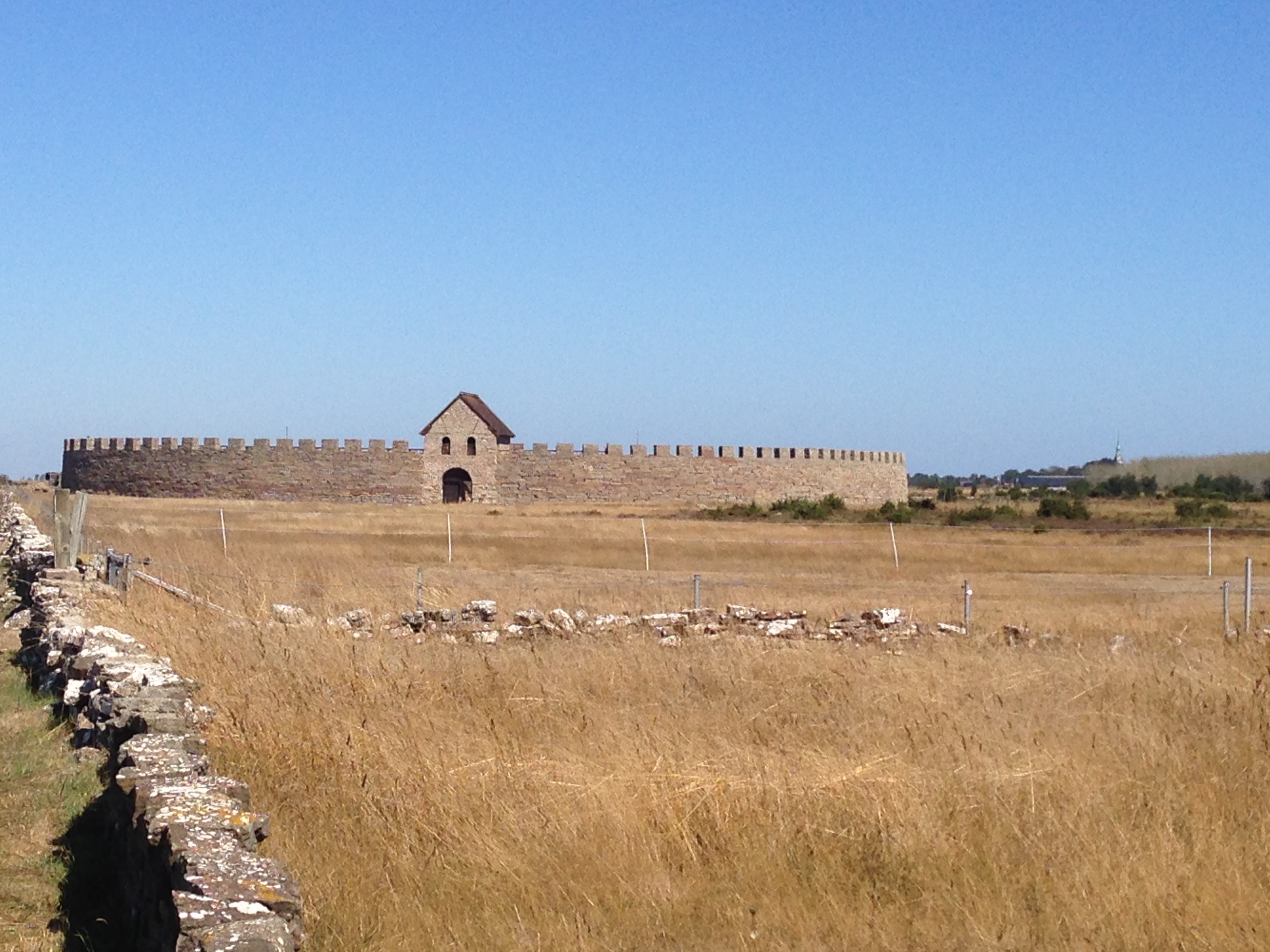
Most of the information they know about this Iron Age village came from archeological finds at the site. Many of the artifacts that were found by archeologists are displayed in the museum which is now at the center house. The town was inhabited on and off from around the fourth century AD and eventually abandoned around AD 1240. This recreation had a working forge, cattle shed, and many dwellings complete with period furniture and tapestry.
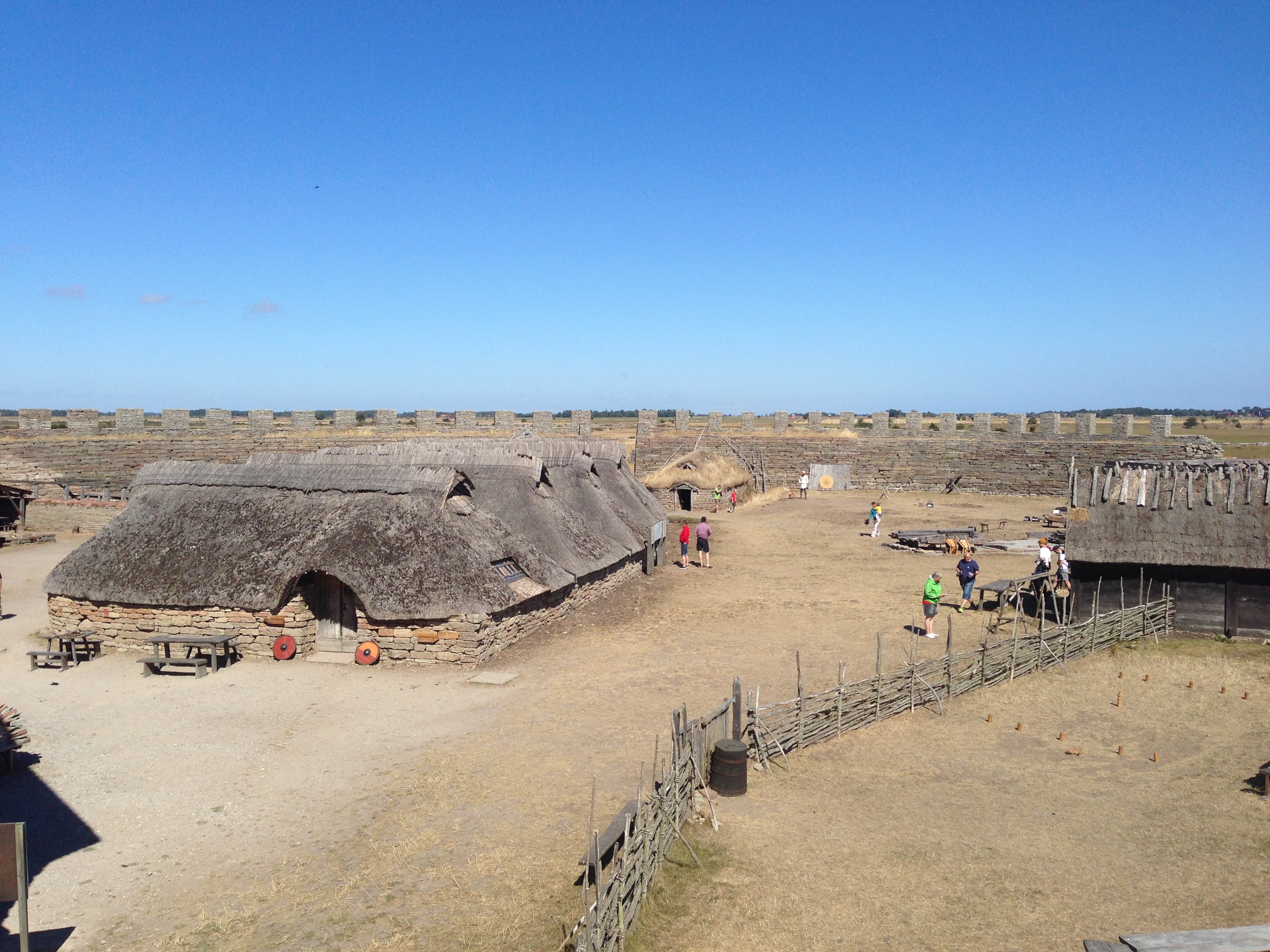
Our last stop in the south was to the very southern tip of the island at Ottenby. Here was a light house and a Naturum (nature museum). The Naturum was devoted to the migratory birds who stop at the island along their routes. The display included telescopes to look out at shore birds and displays of the many types of birds that can be seen throughout the year. There was a display explaining migration and many hands on exhibits about birds that Ethan found interesting. The beach itself was beautiful consisting mostly of flat black slate like pebbles that clattered as you walked on them.
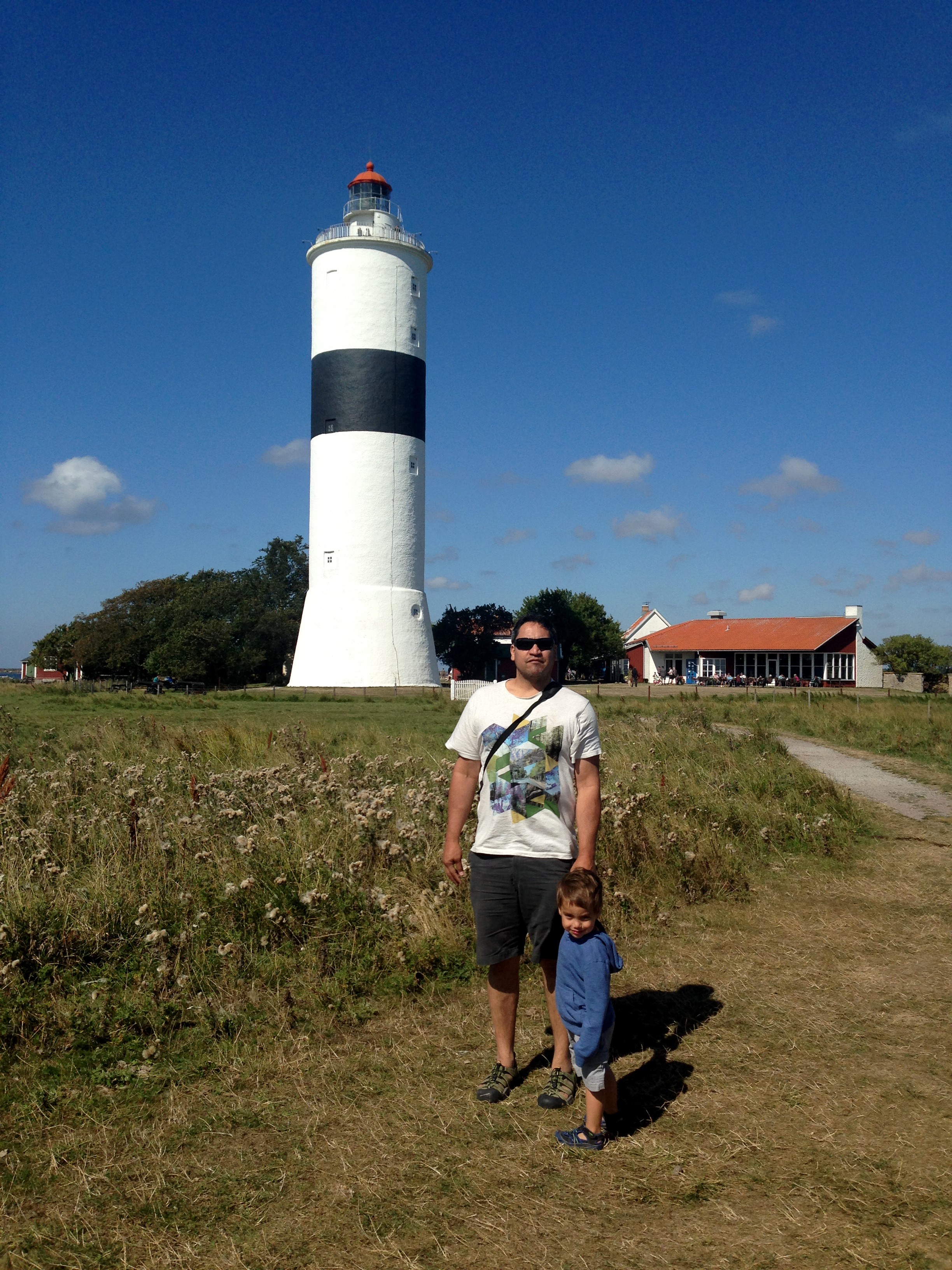
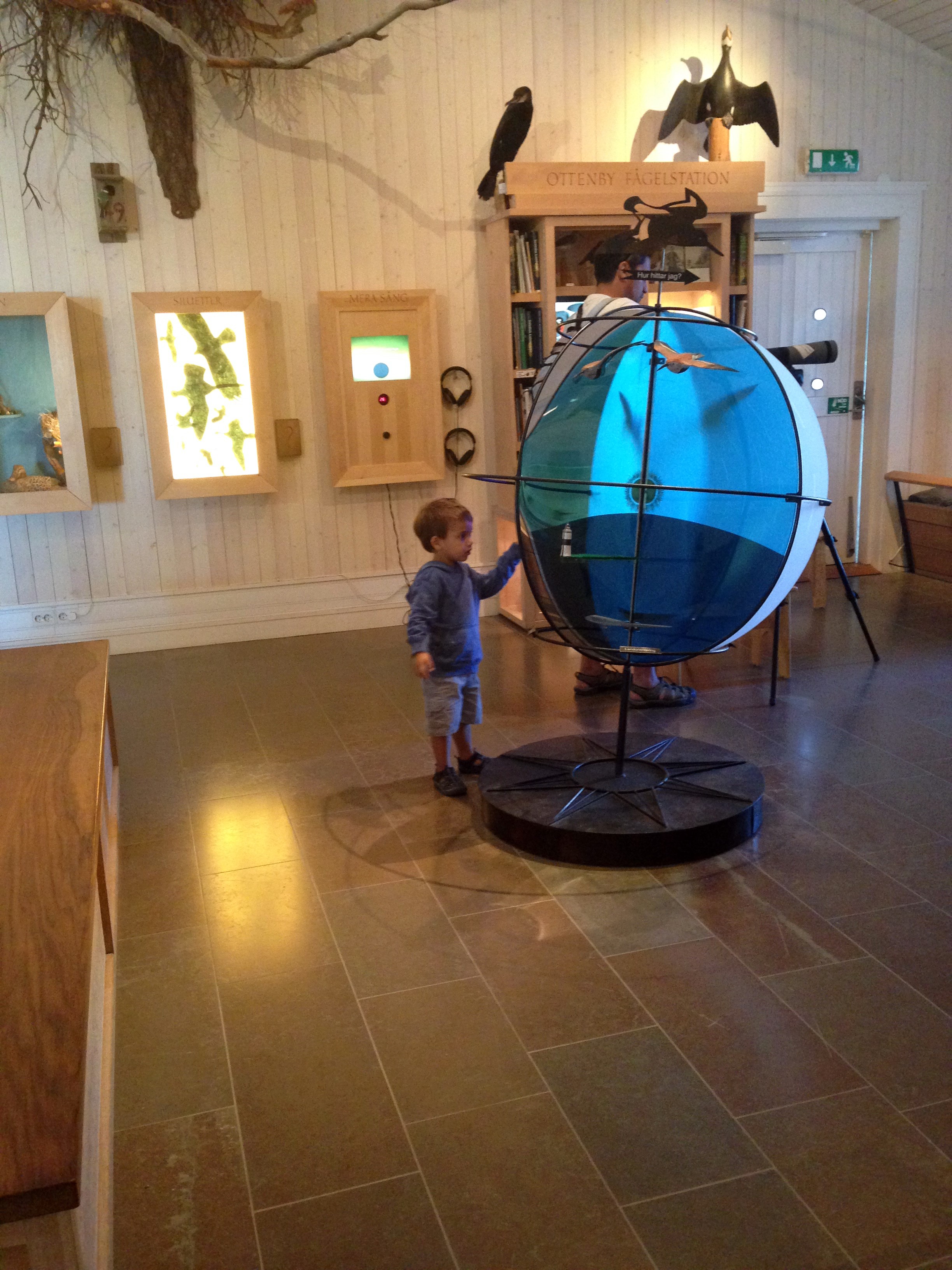
The North
The big draw of the north part of the island are the big white-sand beaches on the east coast. The weather was still hot and windy so a beach day sounded perfect. We spent a couple hours laying in the sand and playing in the waves. This was by far Ethan’s favorite place on our trip so far. We were very happy to be there in the middle of the week away from peak season. Although there were many people it was nothing like the pictures we had seen of crowded beaches.

Our next stop was a hike through the Troll Forest at the northern tip of the island. This forest gets its name because of the bent and twisted trees that grow deformed from the relentless sea wind. Walking along the path of smooth stones veined with tree roots in the thin soil, it started to feel that we were truly walking into a fairy tale. The forest leads right up to the rocky beach where there are remains of an old ship wreck.

The jewel of the forest is a large old snarled tree. If fairies were real, I am sure they would inhabit this tree. In fact the whole forest with its soft underbrush and big dark pine trees looked like it could be enchanted. At the trail head there were red wooden huts with information about the forest and its ecosystem. One included a place for kids to draw pictures of the trolls or fairies that they saw in the forest.
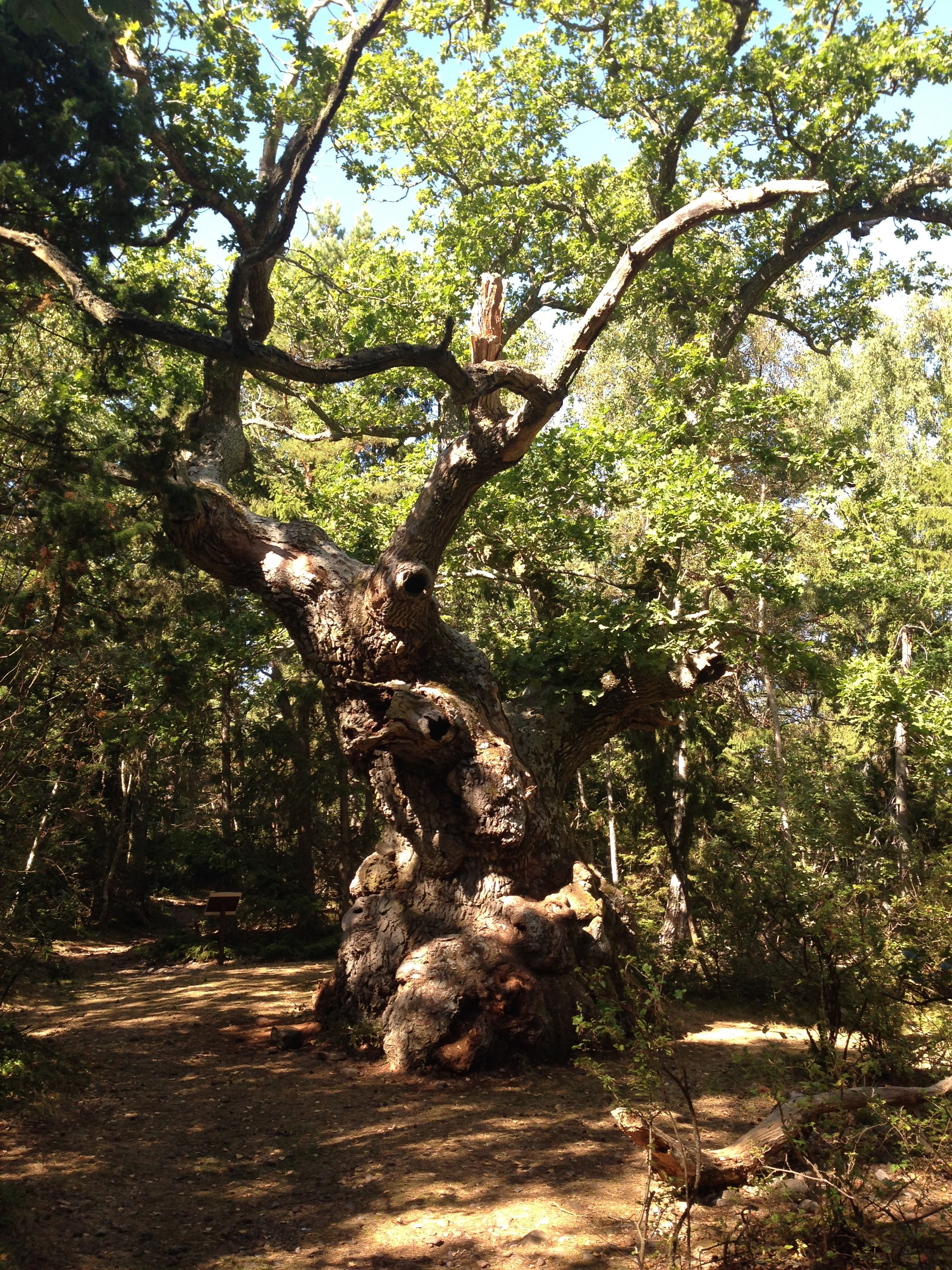
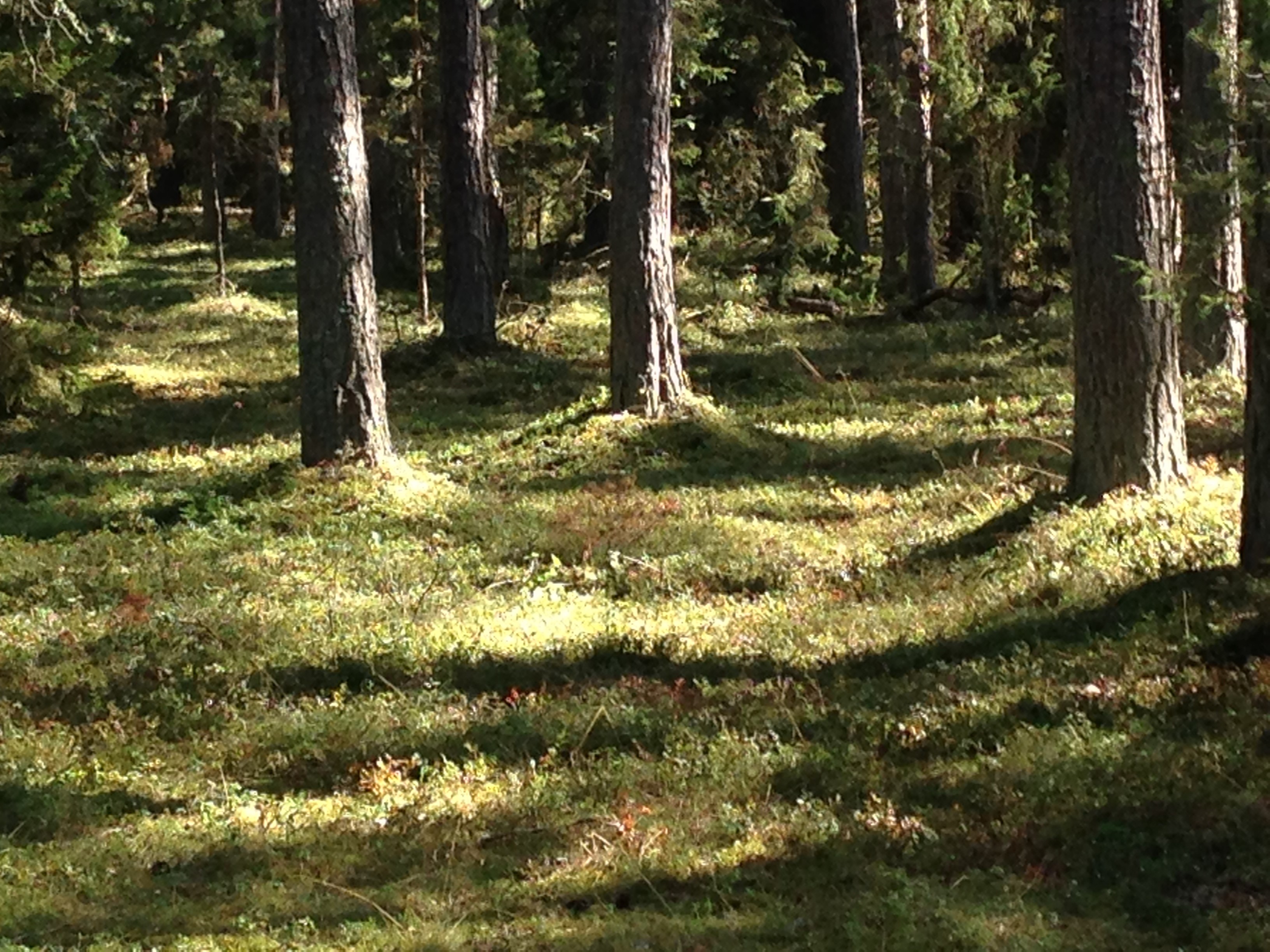
To end our tour of the island we quickly stopped at the lime stone cliffs on the west side. These cliffs go right into the sea. Waves have carved out seastacks or stone pillars. We were shocked at the many different types of beaches and ecosystems in one small island. We can see why this is a popular place for the Swedish people to take holiday.
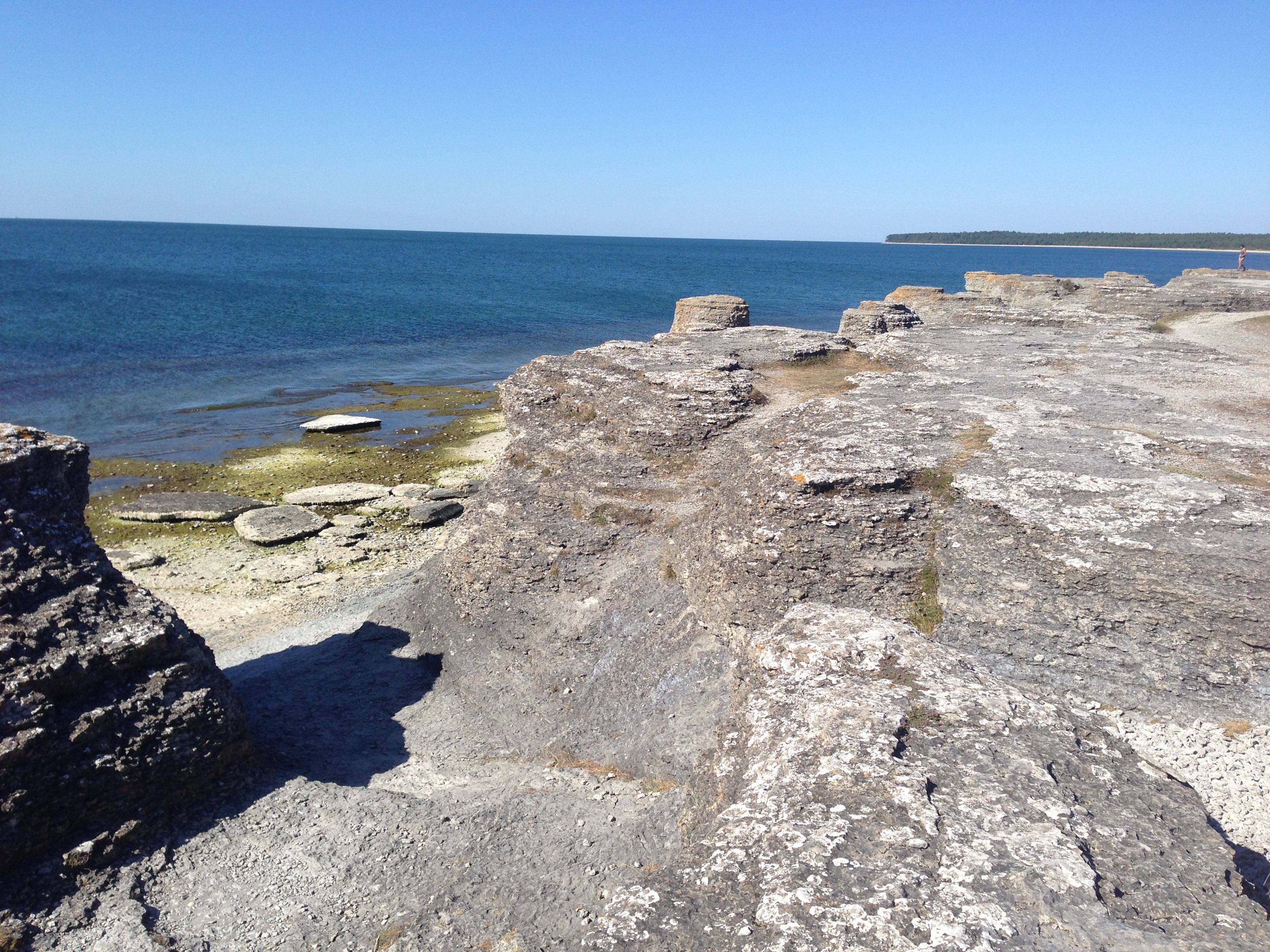
5 September 2015
Sweden Road Trip: Part One
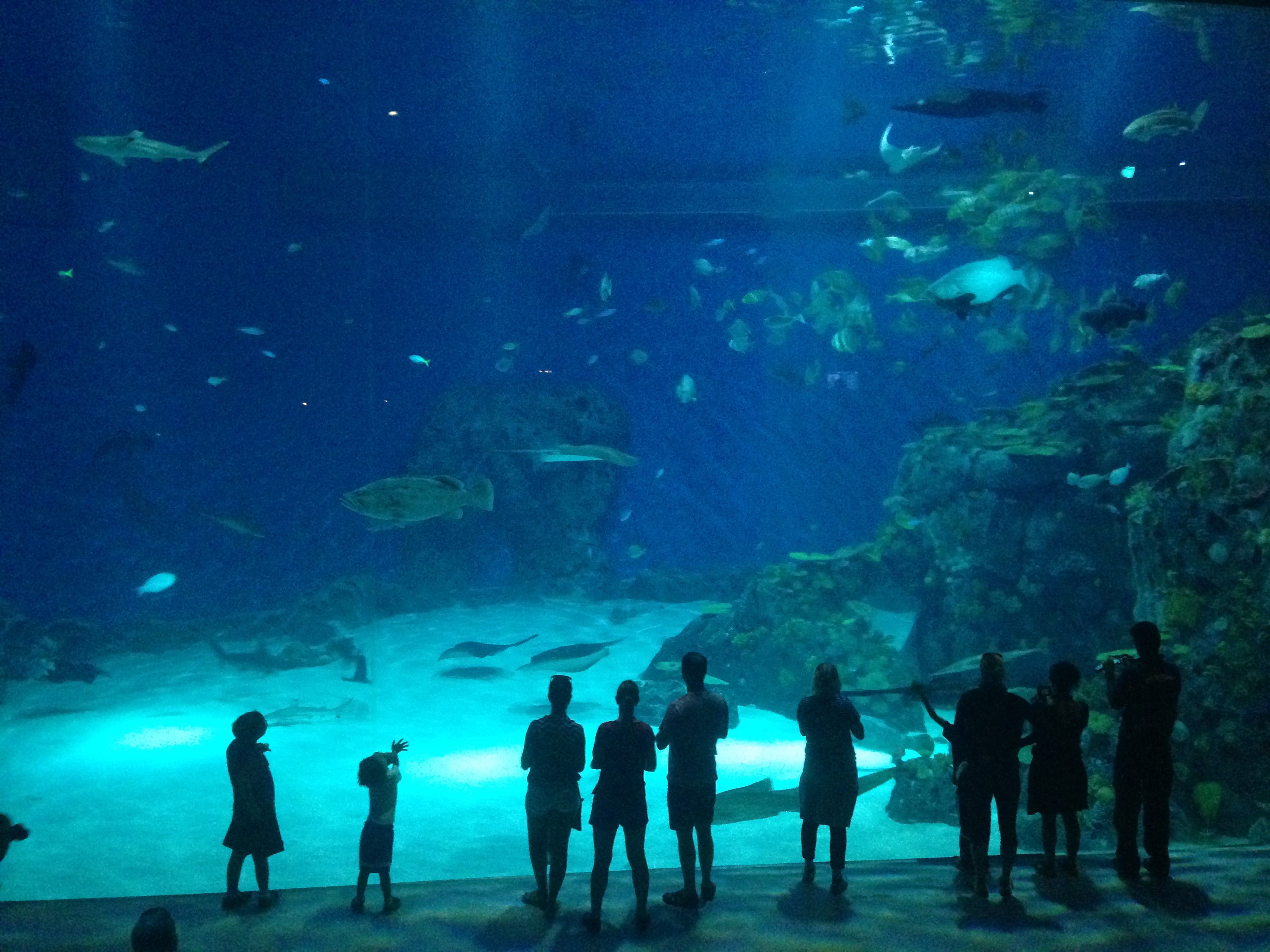
Hello everyone and a special welcome back to school for all my students! I hope that you had a wonderful first week. I miss you all and know that this will be a great year for you. I hope you enjoy your new classes and teachers.
Our Sweden road trip was a wonderful way to say goodbye to summer. Our first day we traveled through three countries (Germany, Denmark, and Sweden). All of these countries are part of the European Union and have a free travel agreement between them. This means that there are no stops at the border, as it happens between USA and Canada. The only way you know you have entered a new country is a small sign and that everything is in a new foreign language. Our first stop was Copenhagen, Denmark’s capital, to visit Den Blå Planet, northern Europe’s largest aquarium. Denmark is a country of islands and in order to travel across it we had to go over some pretty large bridges. The Great Belt Bridge linking two of the islands on the way to Copenhagen is 22,280 feet long and the bridge we took from Copenhagen to reach Sweden (The Oresund Bridge) is 25,738 feet long!
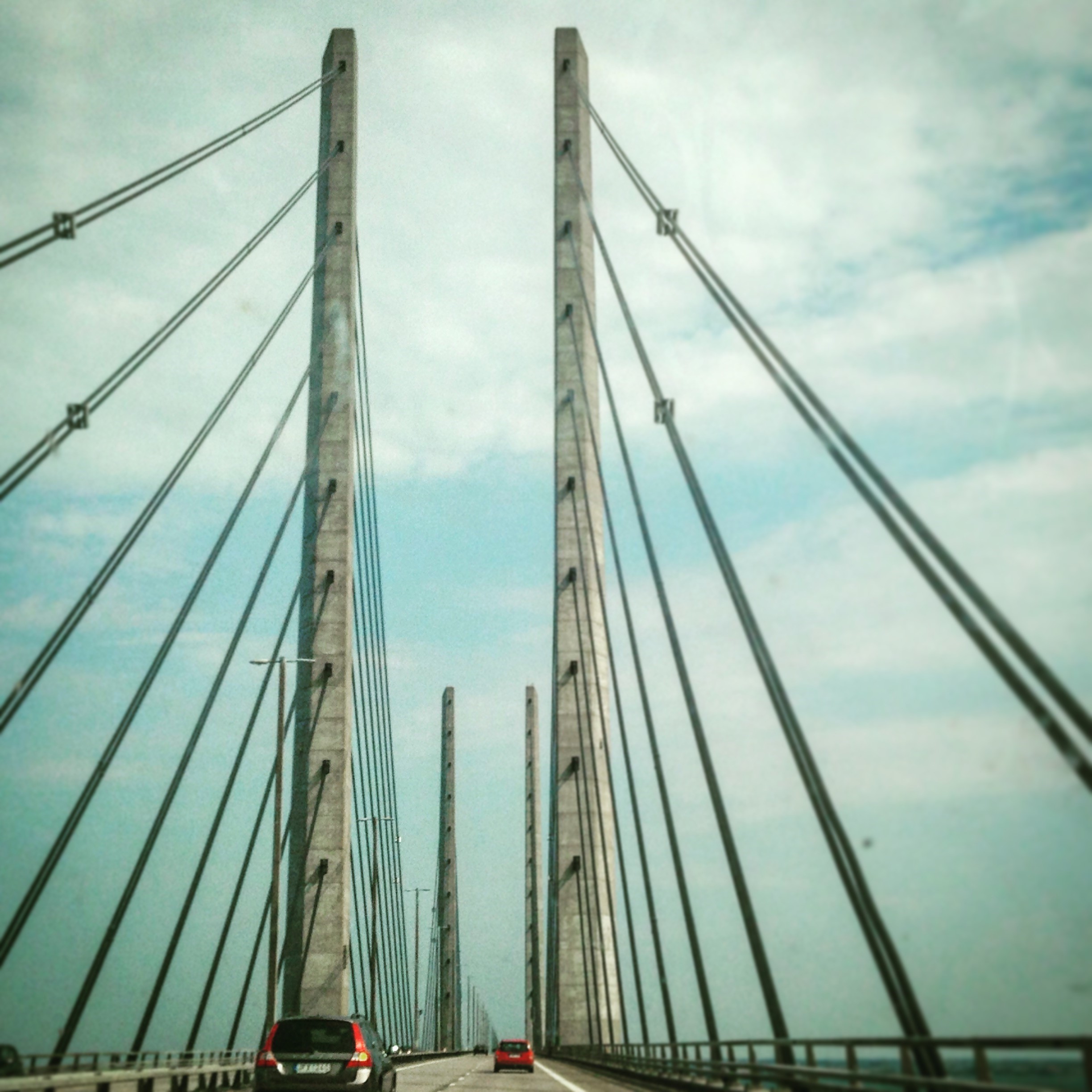
The Oresund Bridge, we justs crossed Sweden from Denmark.
Den Blå Planet is a new aquarium that was built to resemble a whirlpool with each arm of the pool being a different climate for sea life. The big draw for us was the open ocean exhibit with many sharks, a tunnel to walk through the shark tank and, of course, Ethan’s favorite: hammerhead sharks! We spent a lot of time at the open ocean exhibit and got to watch the feeding. The stingrays were my favorite because it looks like they are flying through the water. Other arms of the aquarium featured tropical waters with glittery piranhas, cold waters with large cod, and a beautiful exhibit of puffins perched on simulated basalt columns. We ended our day driving into the southern part of Sweden and staying in Lund, a beatiful university town.
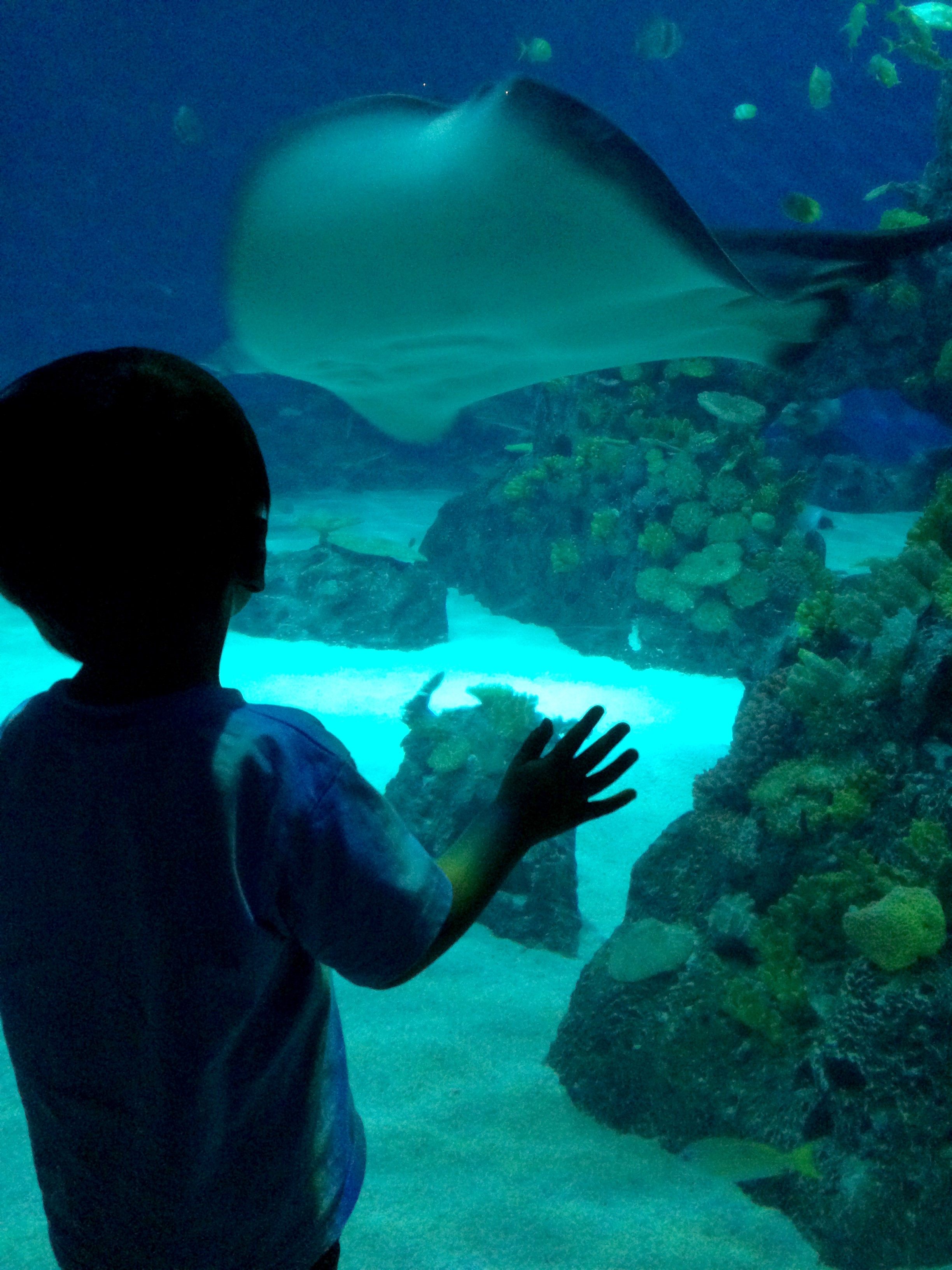
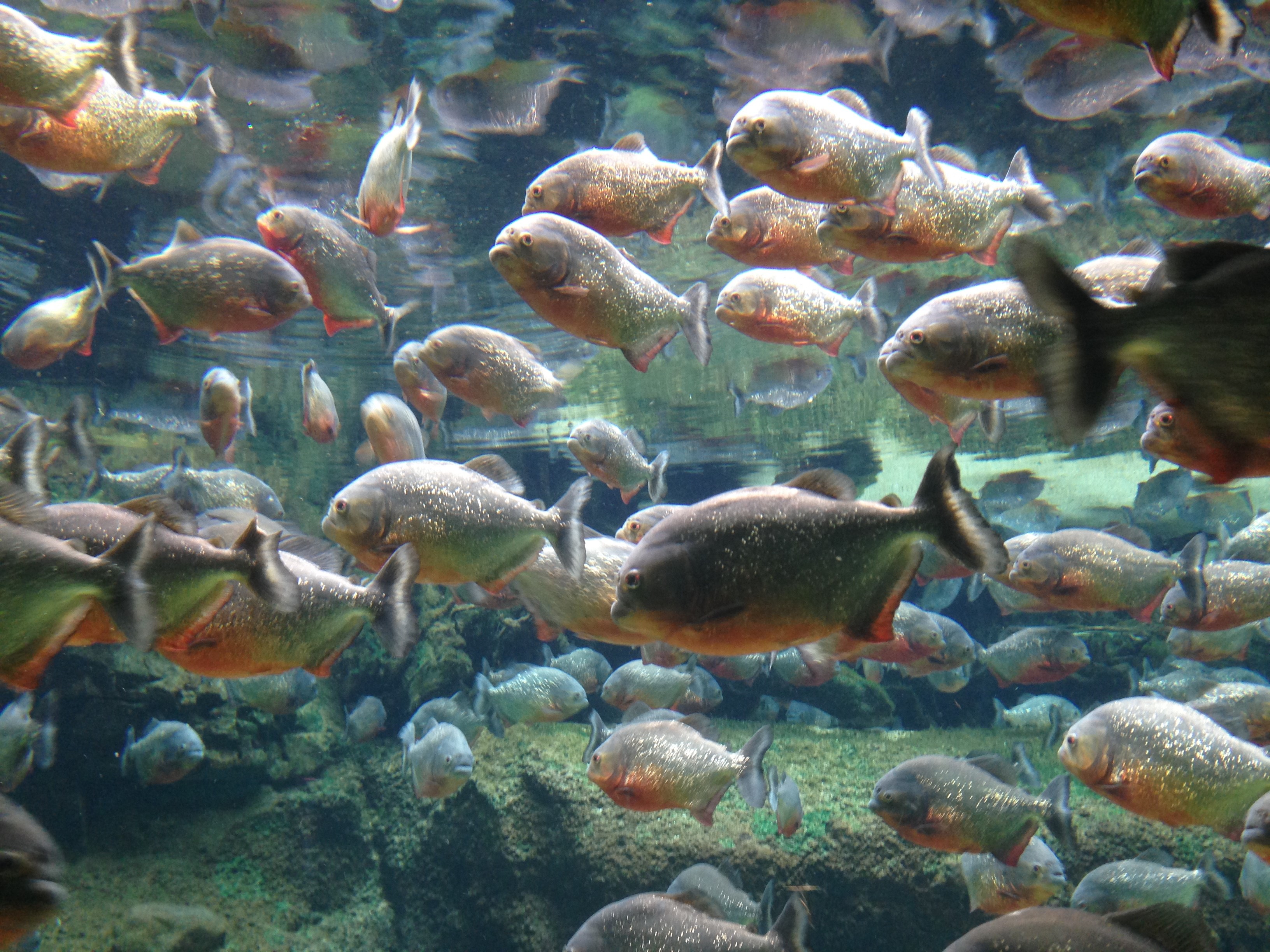

The next day we explored the southern tip of Sweden. Our first stop was in Höllviken for the Fotevikens Viking Museum. This museum was similar to the Viking museum with living village that we visited earlier in Germany, except that the actual museum was quite small but the town was much larger. This site is one of a famously bloody Viking battle. Although the Viking age lasted from about the eighth century until around 1103, the village represents what the transition period to the middle ages looked liked, fashioning the village around 1134 AD.
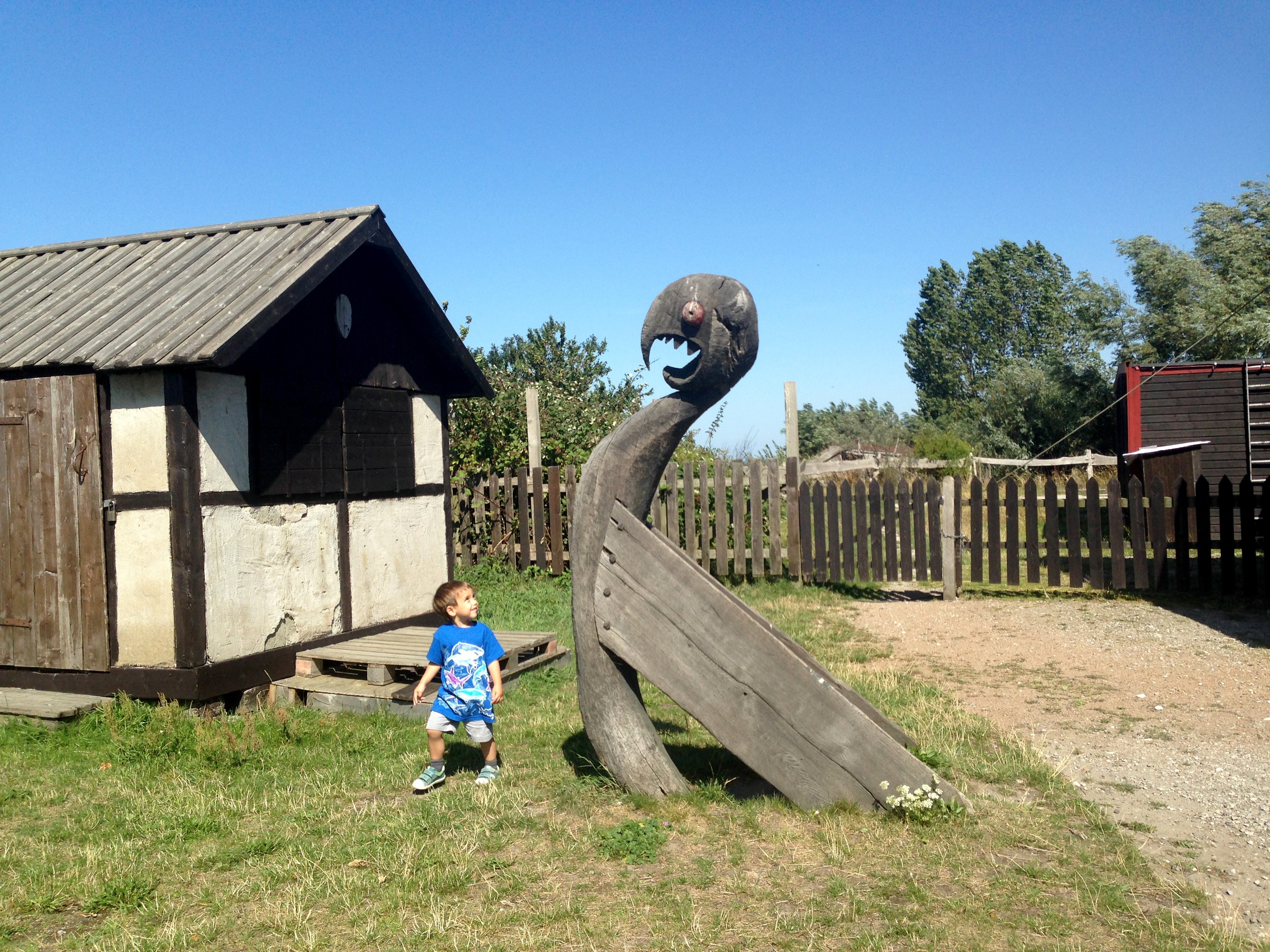
This village includes people who live like Vikings, wearing clothing from that time, making food and tools, and trading following Viking traditions. We were able to watch a woman spinning wool into thread and a man making tools. The blacksmith showed us how he made fire by clashing flint stones and used the fire to make hot coals for melting metal that he then used to cast tools and weapons. Earlier in the summer they hold battle reenactments where they use these traditional weapons. The day we visited was so windy that going into the small, cramped, dirt-floored houses was welcome. We could see why they built their roofs so close to the ground. This provided excellent shelter from the wind that in the winter must be brutal.


On our tour along the southern coast of Sweden we stopped in Ystad. A nice town that is the setting of the famous crime novels of inspector Wallander (A favorite of Alejandro). The whole southern coast is beautiful and windswept. Fields stretch out to meet the sea with little beach in between. The towns are small and quiet and it was nice to wander the small, winding cobblestone streets getting a glimpse of Swedish life.
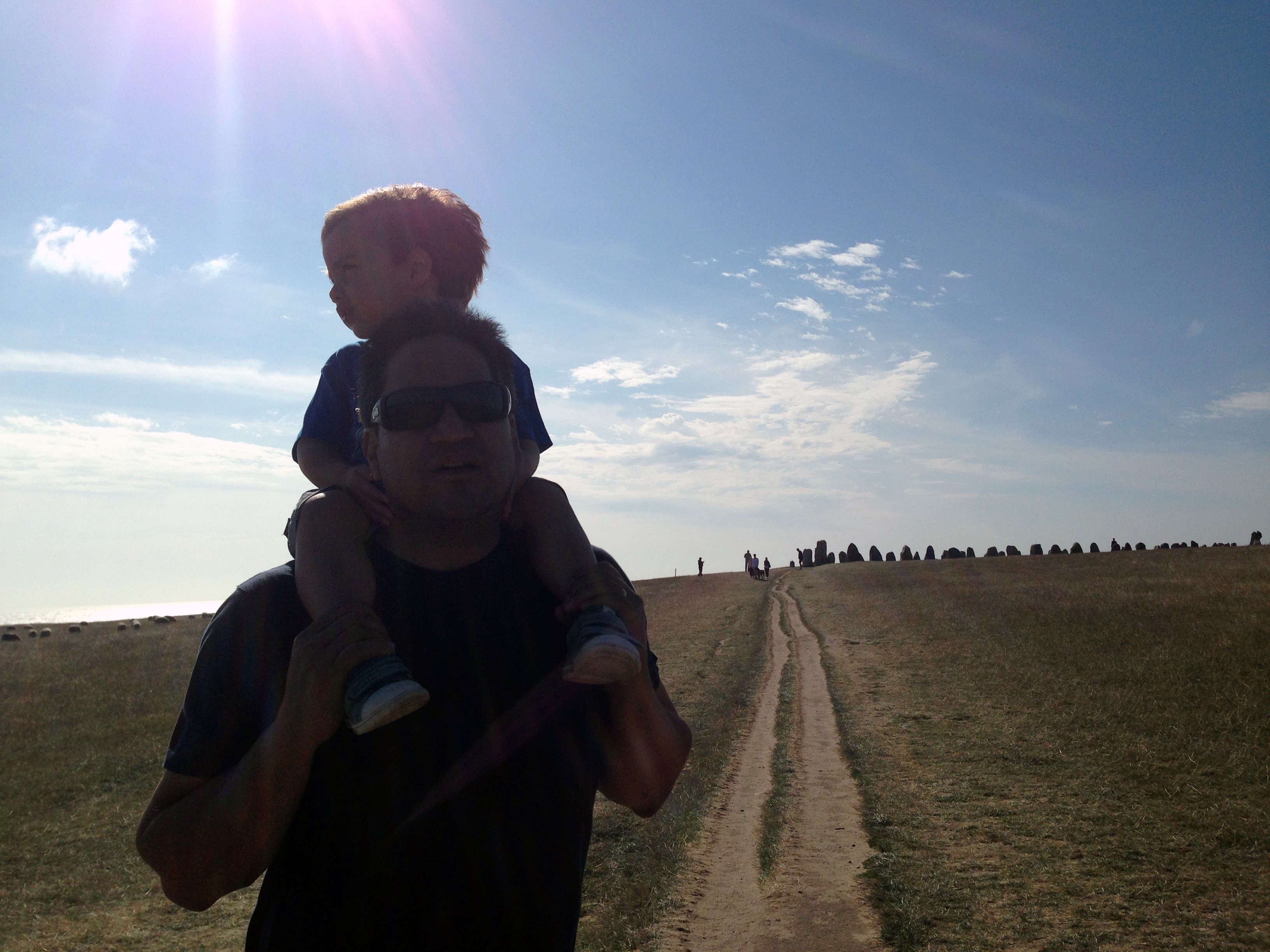
Before we stopped for the day my list included the standing stones of Ales Stenar. This is a little like Stonehenge but much less popular. To get to the circle (or oval) of standing stones we climbed up a hilly pasture in the wind saying hi to sheep as we went. When the stones came into view they looked like jagged teeth piercing the sky. The site itself was beautiful with the rolling green hills ending in steep cliffs to the ocean.
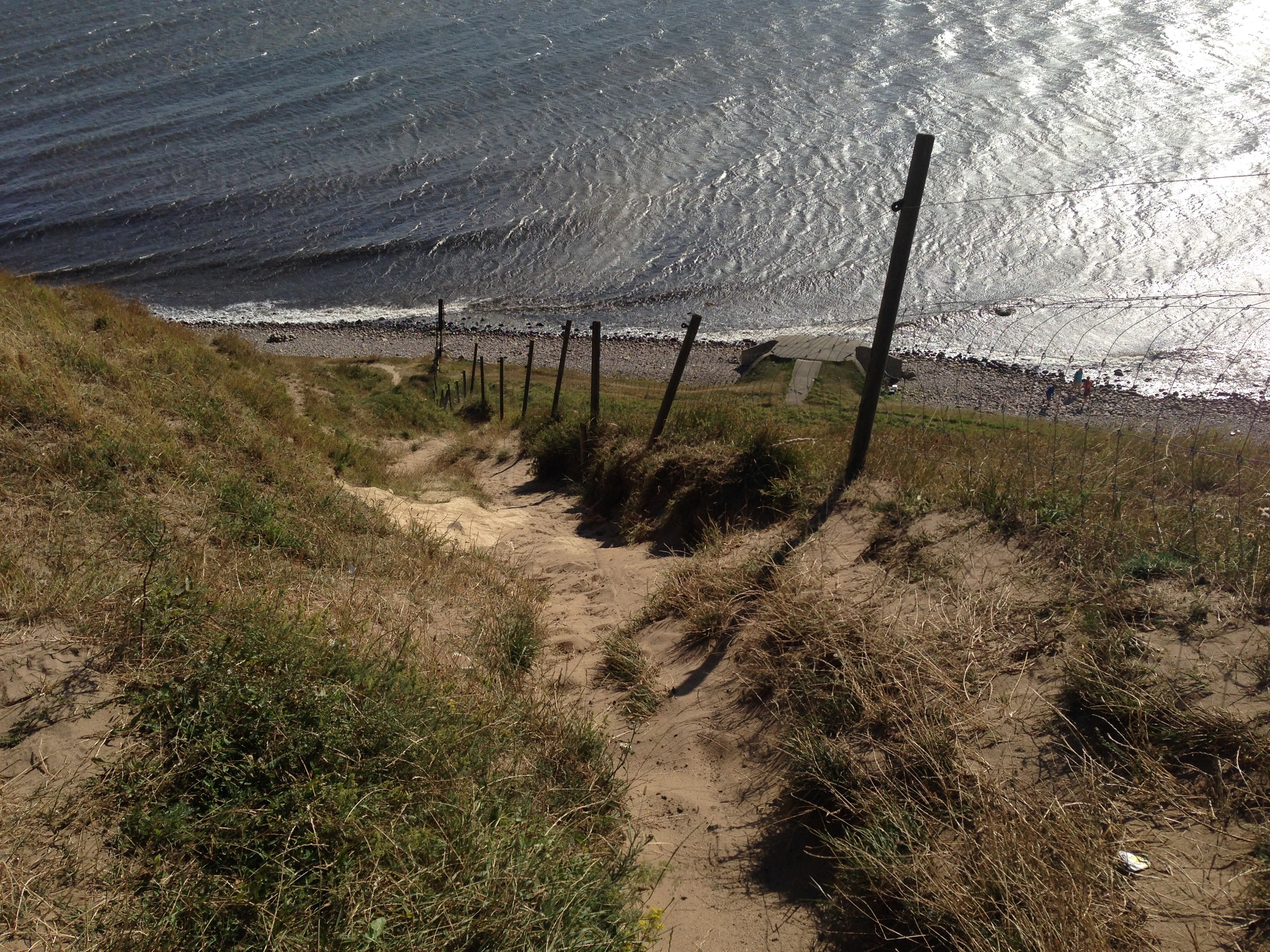
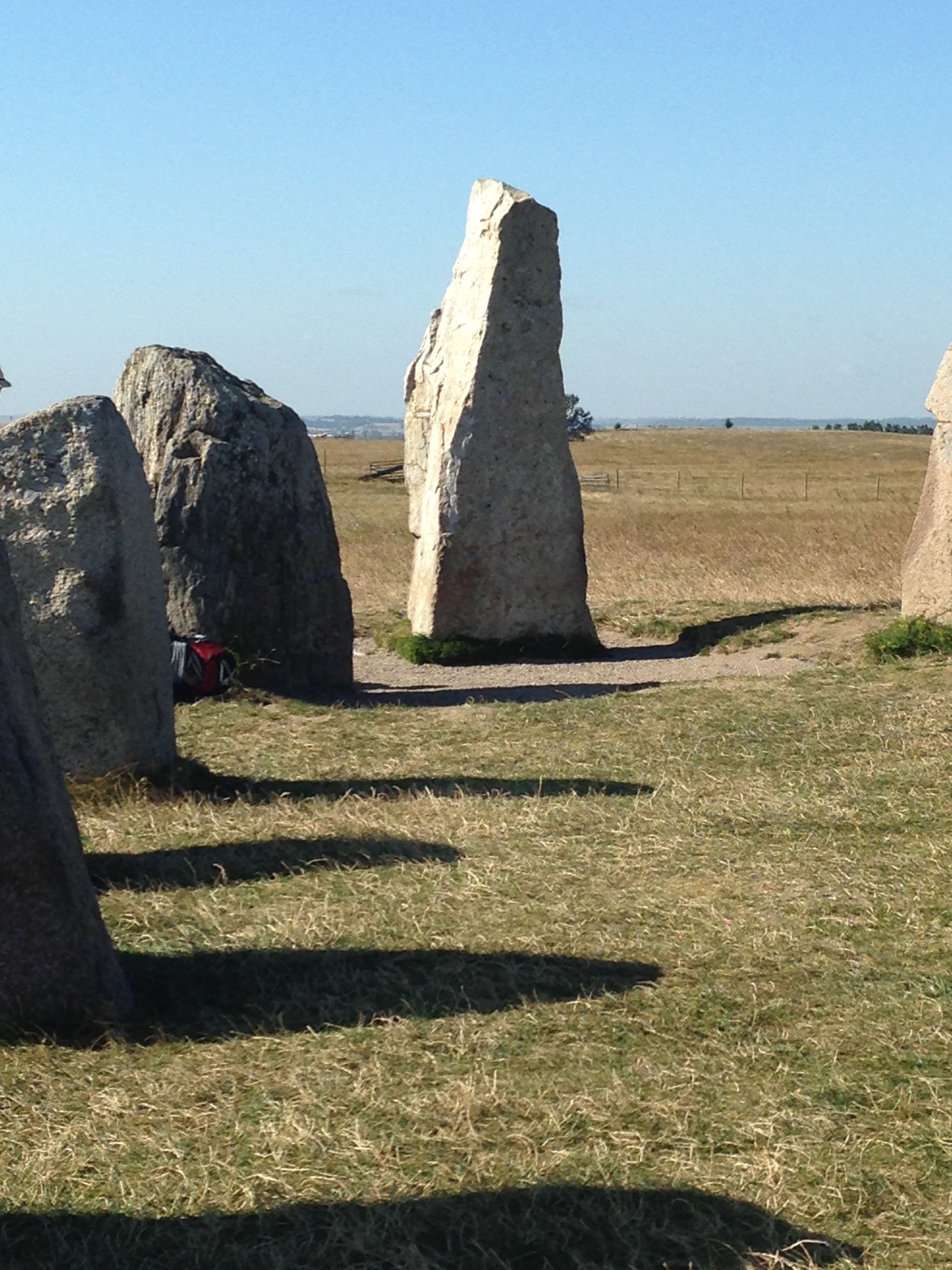
I could tell why this was chosen as an ancient spiritual site. They call this structure a stone ship with 59 boulders in the form of an oval with larger stones at the two ends. Archeologists have found evidence that the site was used for spiritual purposes starting around 400 CE and that the stones might have been moved or added to in order to fit the spiritual needs for the current culture of the time. It is believed that the stone ship was erected around 900 CE and could have been also used as a calendar. This idea is supported by the fact that during the winter solstice (the shortest day of the year) the sun rises over the southern tip stone, and on the summer solstice (the longest day of the year) the sun sets over the northern tip stone.
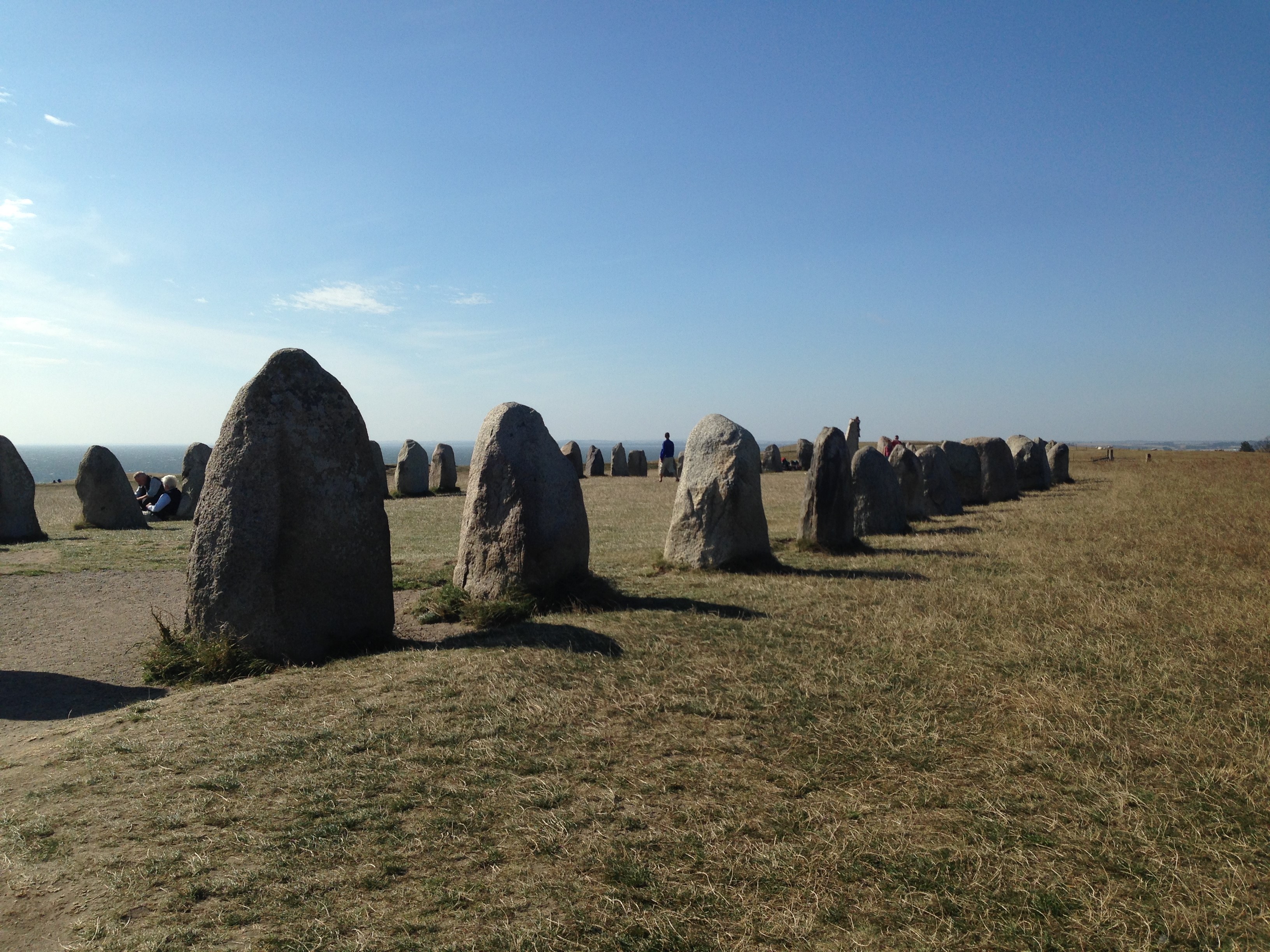
Sitting against the stones I wondered how many others have sat there before me. What were their lives like? Could they have imagined their spiritual site being scrutinized by scientists, looked over by tourists, and grazed around by sheep? What will people of the future think of our spiritual places, or even our schools and stadiums?
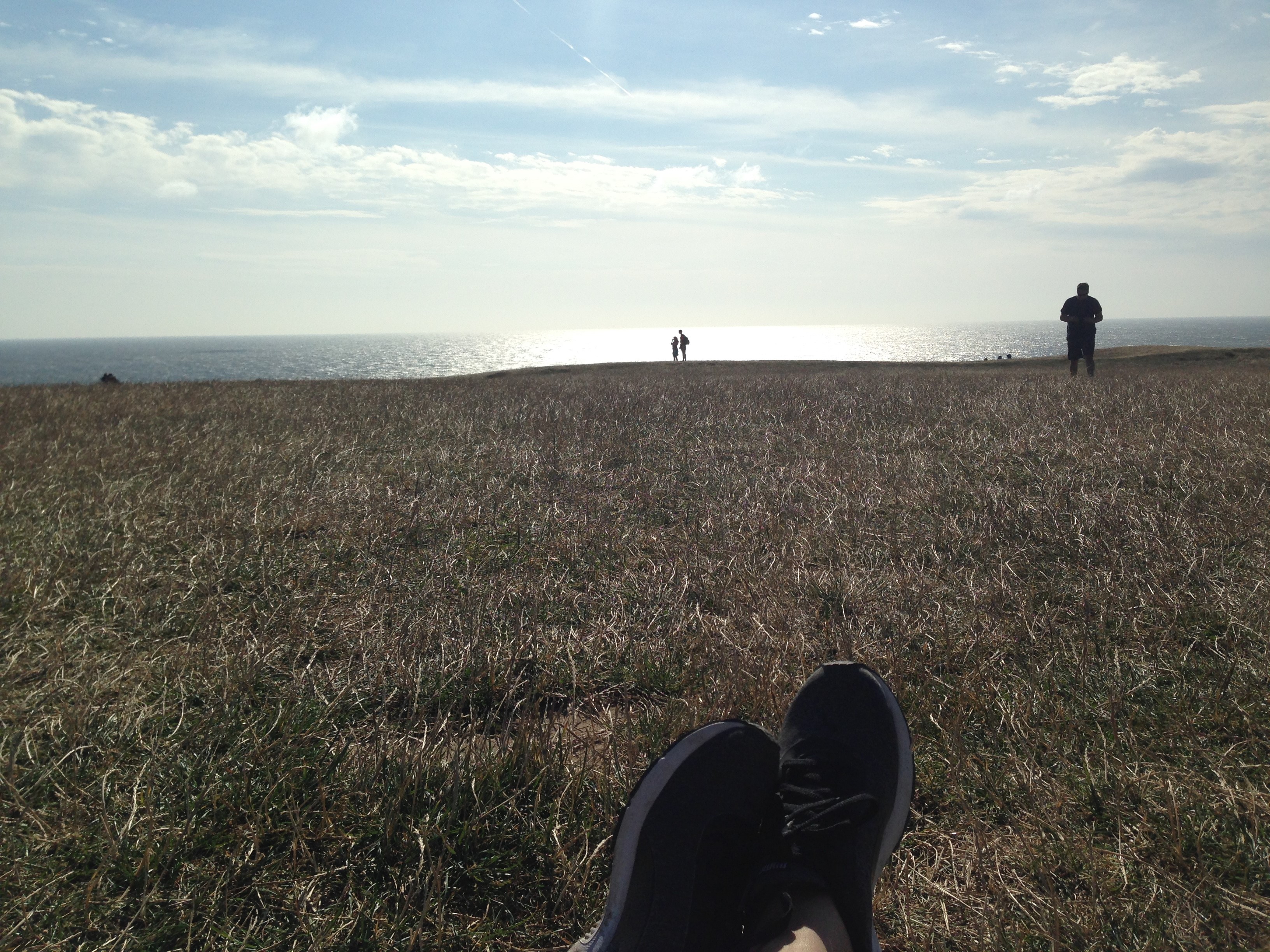
I would love to hear from you about school starting, your summer adventures, and answer any questions you have for me. I am still checking my work email of lisa.acevedo@ferndalesd.org if you want to get in touch. I will try to get our whole trip to Sweden posted this week, so stay tuned!